A colonial front porch serves as a timeless introduction to a home, blending classic American architecture with welcoming charm. This architectural style, rooted in symmetry and understated elegance, offers a versatile canvas for creating an inviting outdoor living space. From the iconic columns and traditional color palettes to the specific choices in lighting and furniture, every detail contributes to a cohesive and historically inspired aesthetic. Whether you are building a new home or renovating an existing one, exploring different colonial front porch ideas can help you capture that perfect balance of formality and comfort, enhancing your home's curb appeal and providing a graceful transition from the outdoors to the interior.
1. Symmetrical Flanking Columns
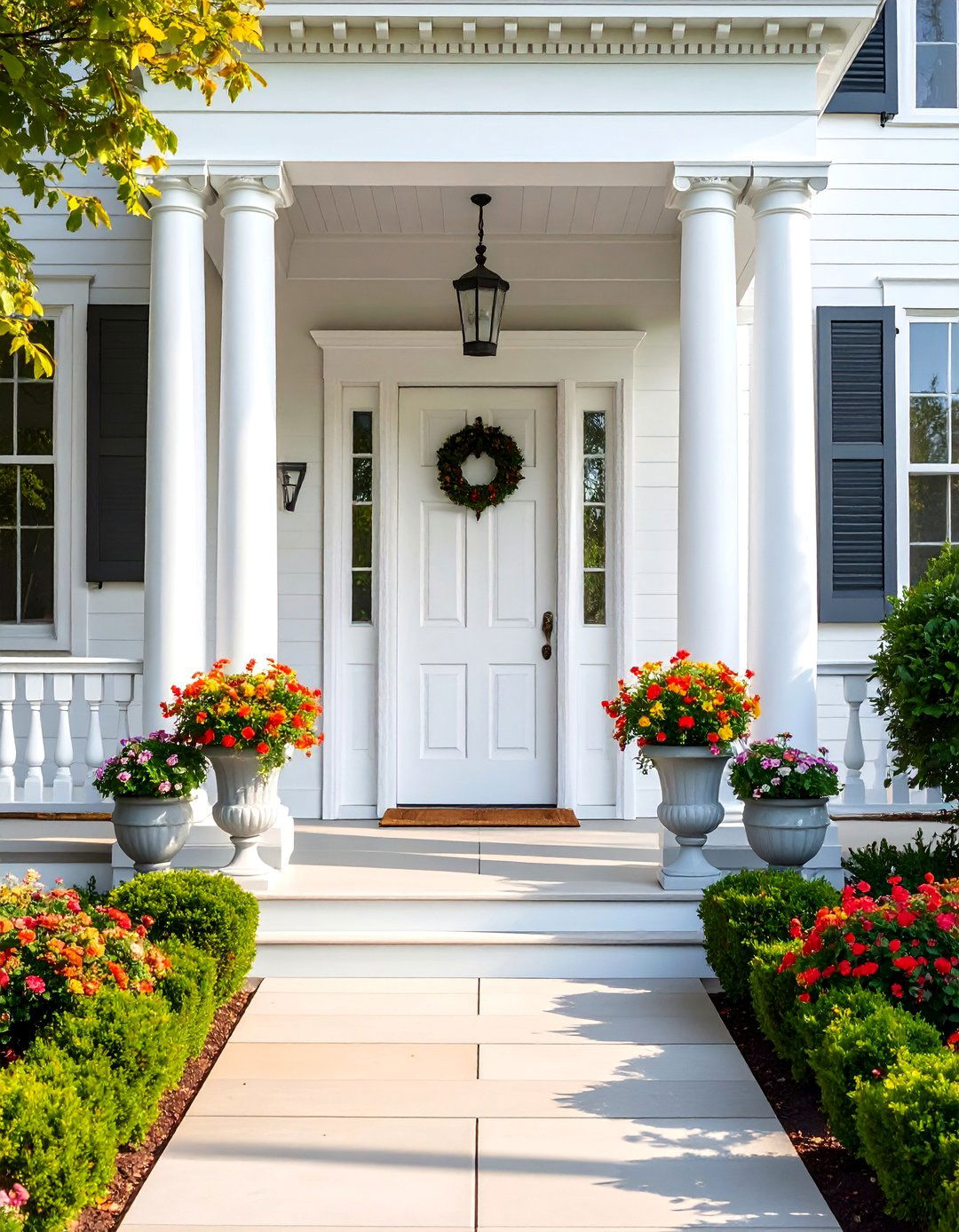
The hallmark of colonial design is its unwavering commitment to symmetry, and this is perfectly expressed through flanking columns. Consider placing two identical columns on either side of the front door to create a balanced and orderly entryway. Simple, non-fluted Doric or Tuscan-style columns, painted a crisp white, are the most authentic choice for this style. This arrangement not only provides structural support for the porch roof but also frames the entrance, drawing the eye directly to the front door. The visual stability offered by symmetrical columns establishes a sense of formality and historical accuracy, immediately signaling the home's colonial influence to any visitor approaching the facade.
2. Classic White Porch Railings
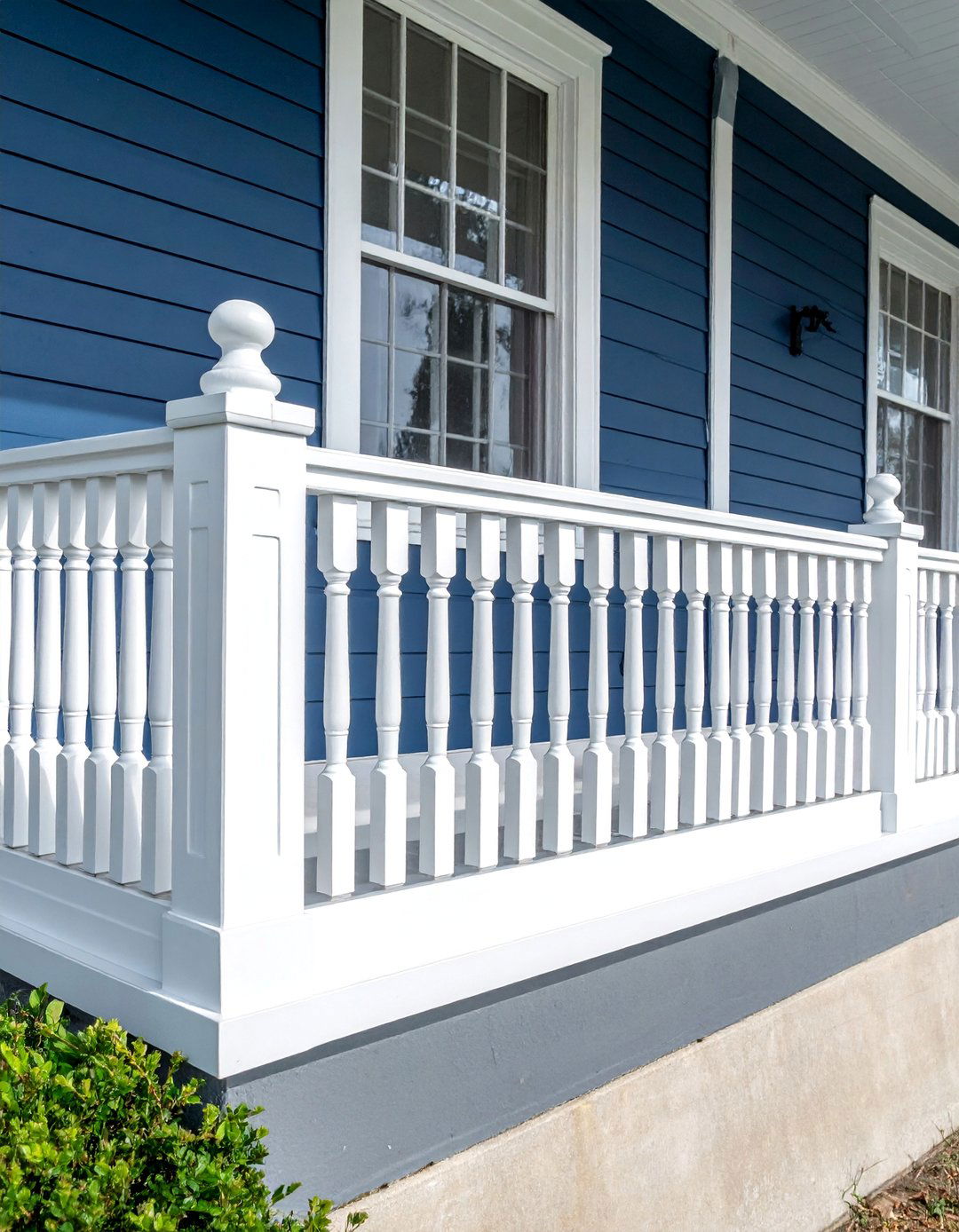
For an authentic colonial look, installing classic white porch railings with simple, straight balusters is essential. These railings provide safety without obstructing the view, maintaining the clean lines and uncluttered feel characteristic of the era. The balusters should be evenly spaced and substantial enough to feel sturdy yet elegant. A flat top rail offers a practical place to rest a hand or a drink, while the crisp white paint contrasts beautifully with darker siding colors or natural brick. This design choice is not merely decorative; it defines the porch as a distinct outdoor room and reinforces the home’s traditional architectural integrity with its timeless simplicity.
3. A Traditional Haint Blue Ceiling
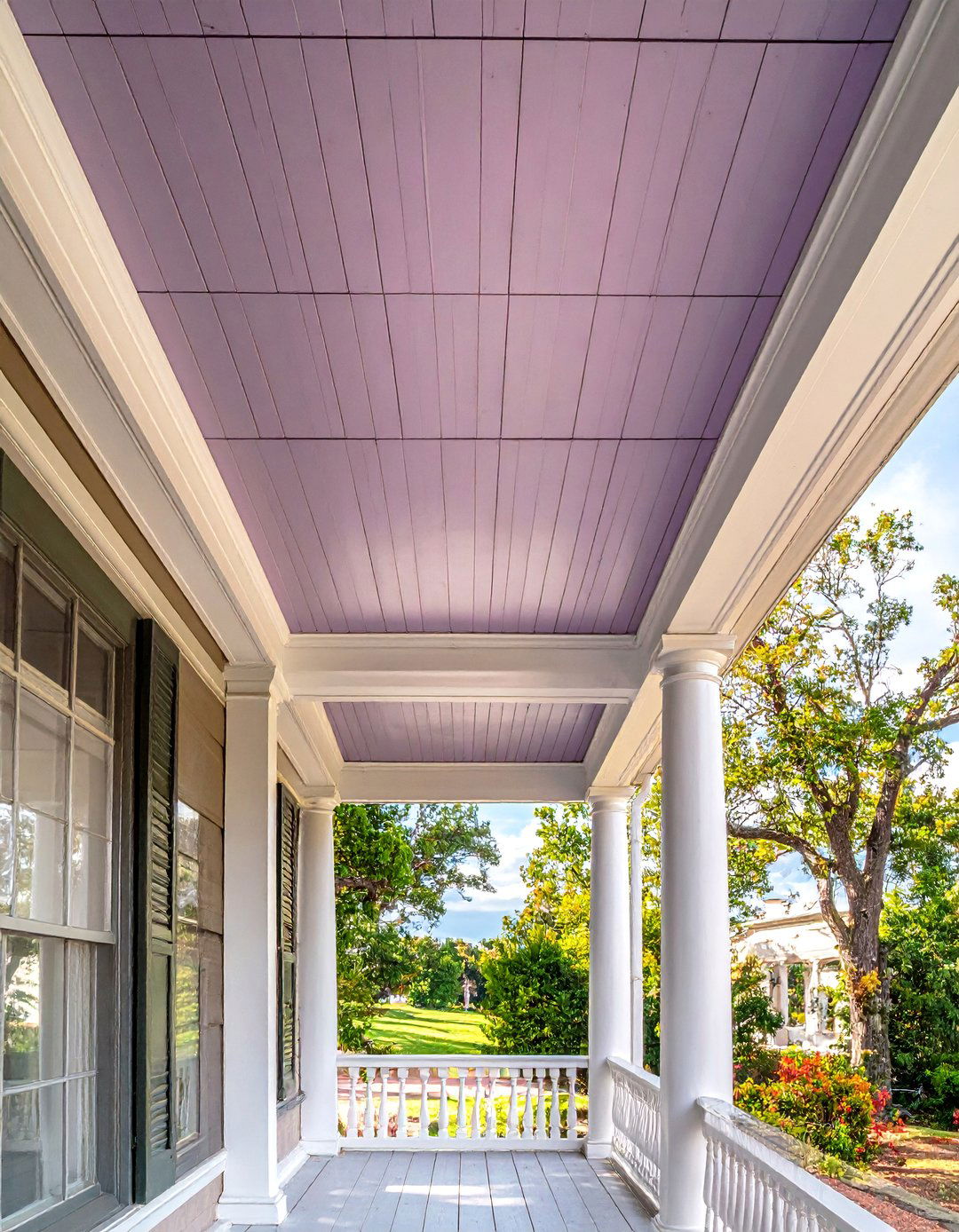
Painting the porch ceiling a soft, pale blue, often referred to as "haint blue," is a cherished tradition in American colonial and southern design. This specific shade is believed to ward off spirits, or "haints," and also discourage insects from building nests, as they supposedly mistake the color for the sky. Beyond its folklore, a haint blue ceiling adds a subtle touch of color that creates an illusion of a brighter, more expansive space. It provides a gentle contrast against white trim and columns, contributing a layer of historical depth and quiet charm. This simple coat of paint can transform the feel of your porch, making it feel more open and serene.
4. Red Brick Porch Steps and Flooring

Using red brick for your porch steps and flooring is a fantastic way to ground your home with historical character and texture. Brick is incredibly durable and offers a warm, earthy tone that complements classic colonial color schemes like white, black, and navy. Consider laying the bricks in a traditional pattern, such as a running bond or a more intricate herringbone design, to add visual interest. This material choice not only enhances curb appeal but also provides a non-slip surface that stands up well to foot traffic and varying weather conditions. The timeless appeal of brick connects the home to its landscape and echoes the building practices of the colonial period.
5. A High-Gloss Black Front Door

A front door painted in high-gloss black makes a powerful, elegant statement on a colonial home. This choice creates a dramatic focal point against a backdrop of white trim and neutral siding, embodying a sense of formal sophistication. The reflective sheen of the high-gloss finish catches the light, highlighting the door's architectural details, such as raised panels or decorative molding. This classic color is deeply rooted in colonial tradition, symbolizing strength and authority. Paired with polished brass hardware, a black door provides a sharp, clean contrast that feels both timeless and impeccably stylish, welcoming guests with a touch of refined drama.
6. Polished Brass Door Hardware
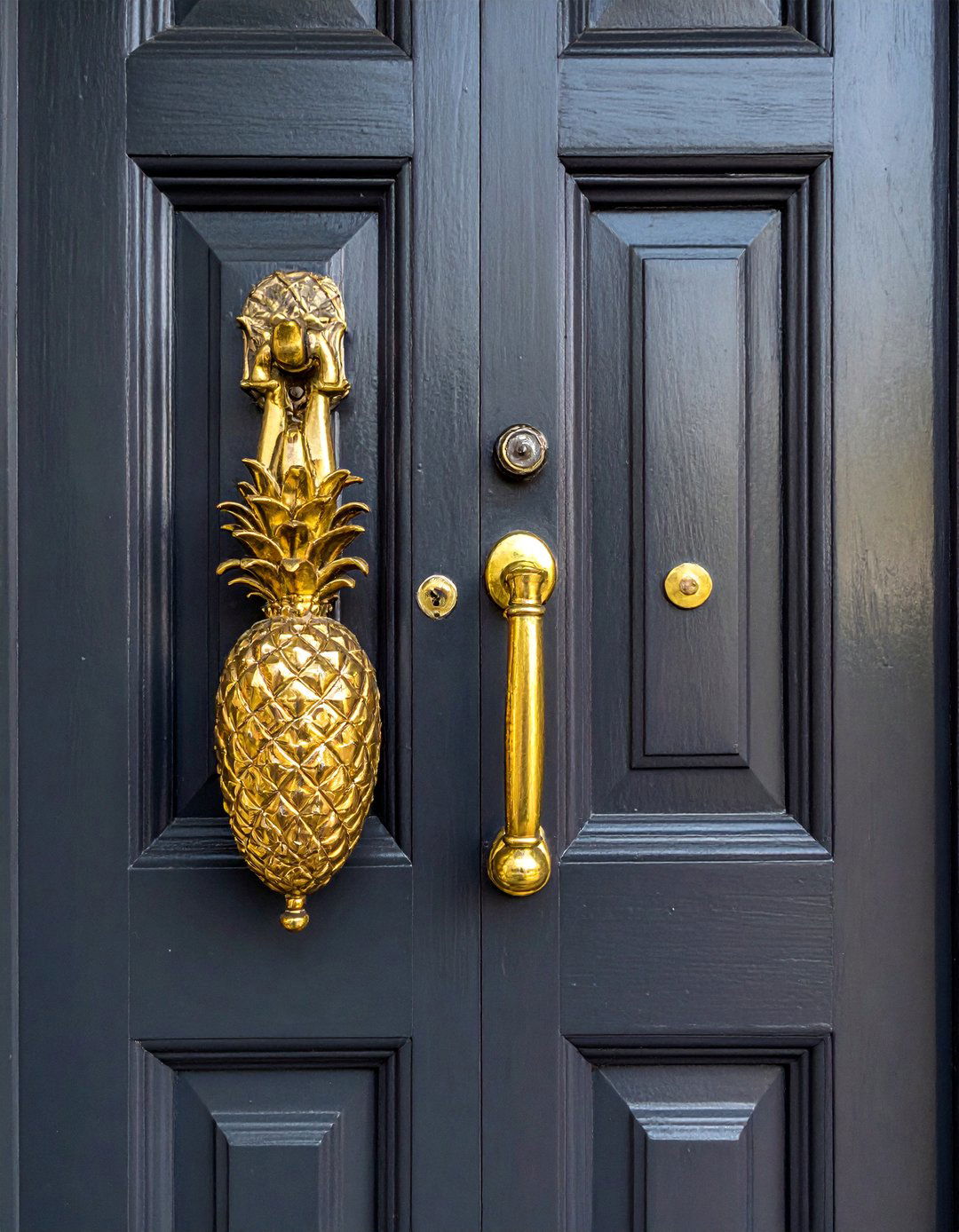
To complete the classic colonial entryway, select polished brass hardware for your front door. A gleaming brass handle set, knocker, and mail slot add a layer of authentic, historical detail that stands out beautifully against a dark-colored door. The warm, golden tone of polished brass develops a rich patina over time, adding to the home's character and sense of history. Look for designs that reflect the era, such as an eagle or pineapple knocker, which were common motifs symbolizing hospitality and patriotism. This small but significant detail elevates the entire facade, providing a touch of luxury and a nod to eighteenth-century craftsmanship.
7. Period-Appropriate Gas Lantern Sconces

Flanking your front door with a pair of gas-style lantern sconces is a perfect way to illuminate your colonial porch with period-appropriate charm. These fixtures, typically crafted from black iron or aged brass, mimic the look of historic gaslights, casting a warm and inviting glow. Choose lanterns with clear or seeded glass panes to enhance their vintage appeal. Placing one on each side of the door maintains the crucial element of symmetry while ensuring the entryway is well-lit for safety and ambiance. This lighting choice not only serves a practical purpose but also acts as a key decorative element that reinforces the home's historical aesthetic.
8. A Pair of Wooden Rocking Chairs
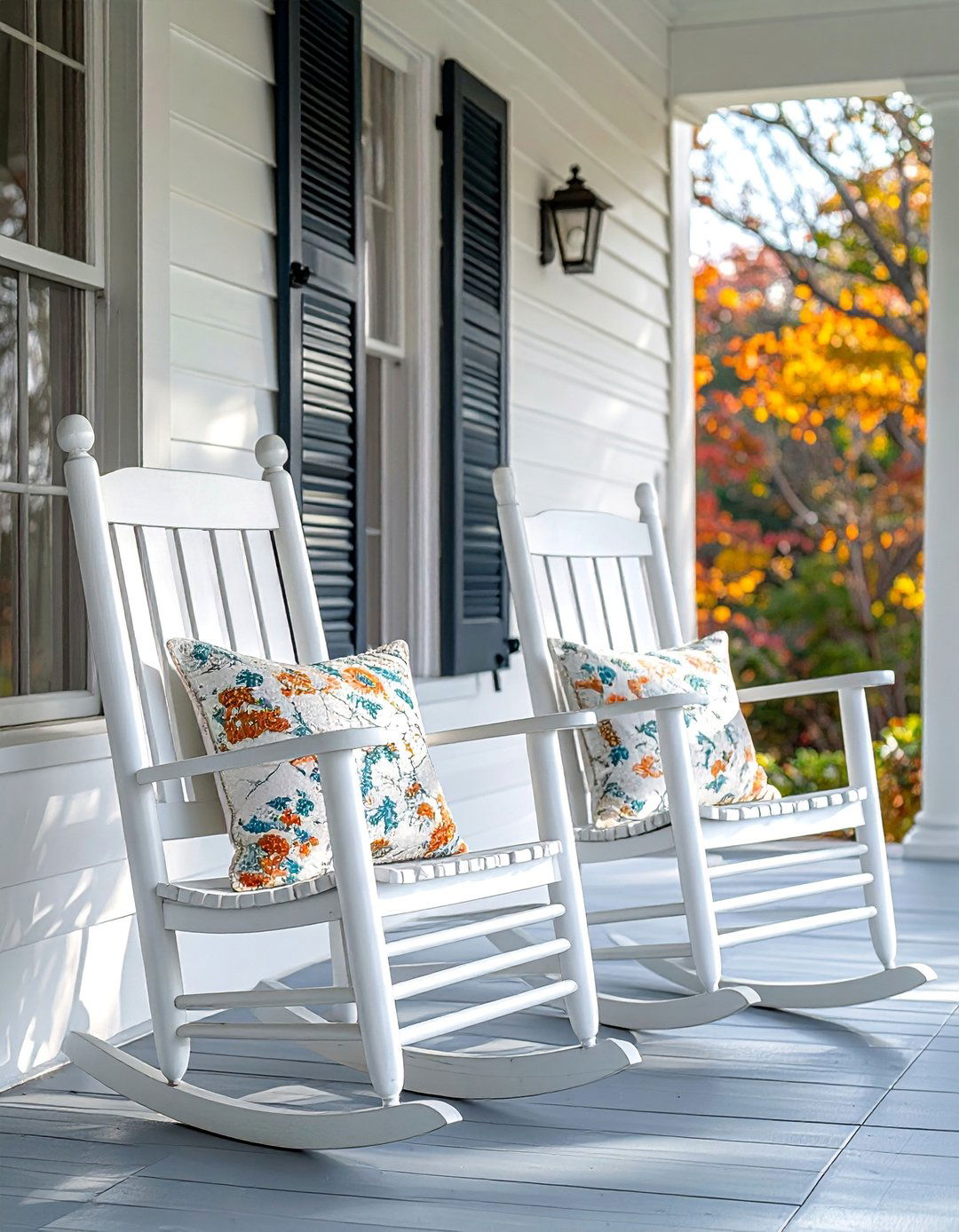
No colonial front porch feels complete without a pair of classic wooden rocking chairs. Positioned symmetrically, these chairs invite relaxation and conversation, turning the porch into a functional outdoor living area. Opt for a timeless design with a high back and wide armrests for maximum comfort. While natural wood is a beautiful choice, painting the rockers white to match the trim or black to coordinate with the front door creates a cohesive and polished look. Adding simple cushions in a neutral or subtly patterned fabric can provide extra comfort without detracting from the porch's understated elegance. Rocking chairs embody a slower, more deliberate pace of life, perfectly suiting the colonial vibe.
9. Cascading Hanging Fern Baskets
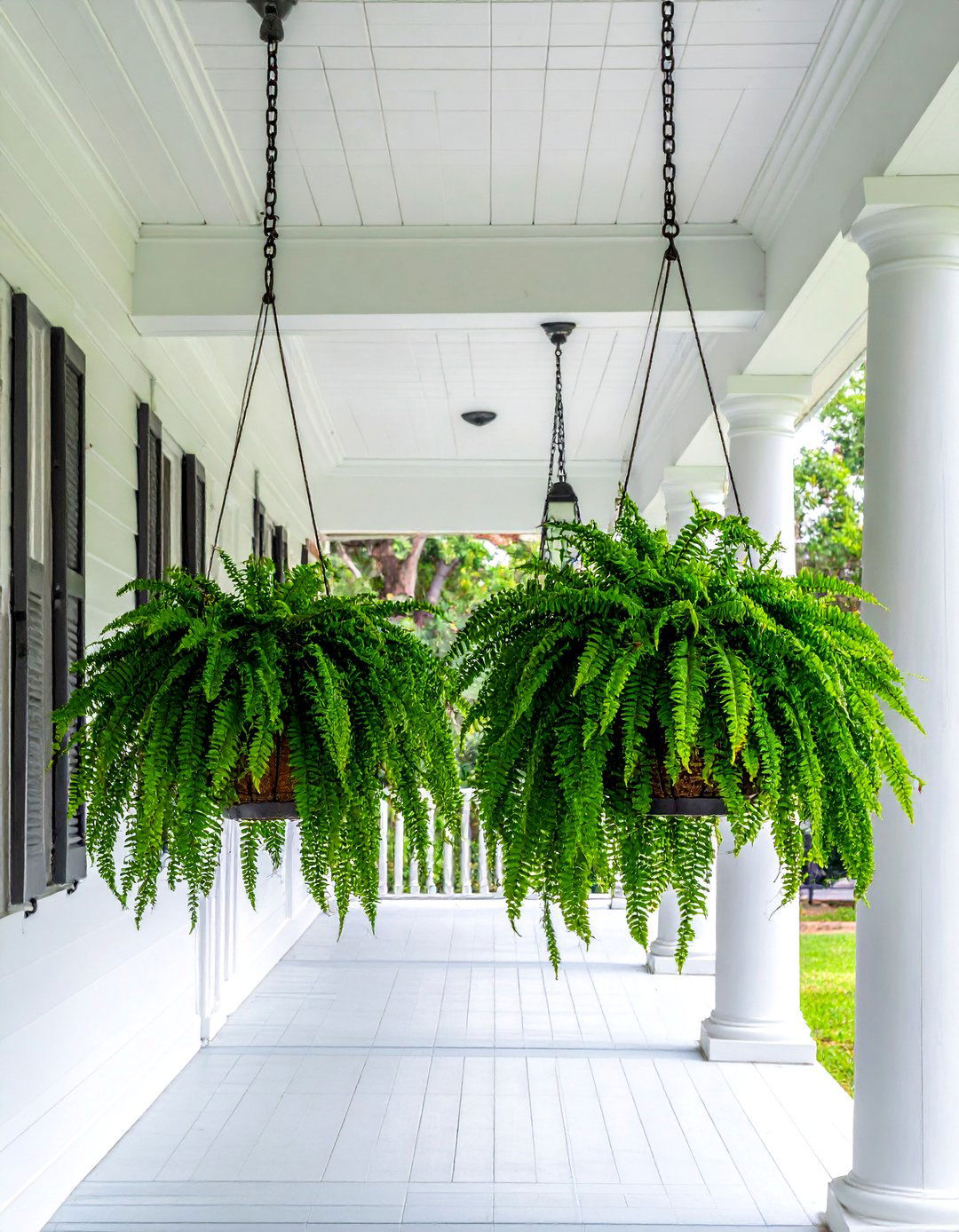
Bringing natural elements onto the porch through hanging fern baskets adds softness and life to the structured colonial architecture. Hang two identical baskets filled with lush, cascading ferns from the porch ceiling, placing them symmetrically on either side of the entrance or at the corners of the porch. The vibrant green foliage provides a beautiful contrast against the crisp white trim and columns. Ferns are a low-maintenance option that thrives in the shade provided by a covered porch, offering texture and a touch of organic beauty. This simple addition helps to create a welcoming atmosphere that feels both curated and natural.
10. Symmetrical Shutter-Flanked Windows

Shutters are a defining feature of colonial architecture, adding a layer of dimension and authenticity to the home's facade. For windows visible from the front porch, install symmetrically placed paneled or louvered shutters. Traditionally, shutters were functional, used to protect windows from storms and regulate sunlight. Today, they are primarily decorative but should still be sized correctly—each shutter should be half the width of the window to look authentic. Painting them a contrasting color, such as black, deep green, or navy, against a lighter siding color creates a striking visual effect that reinforces the home's classic, orderly aesthetic.
11. Bluestone Porch Flooring
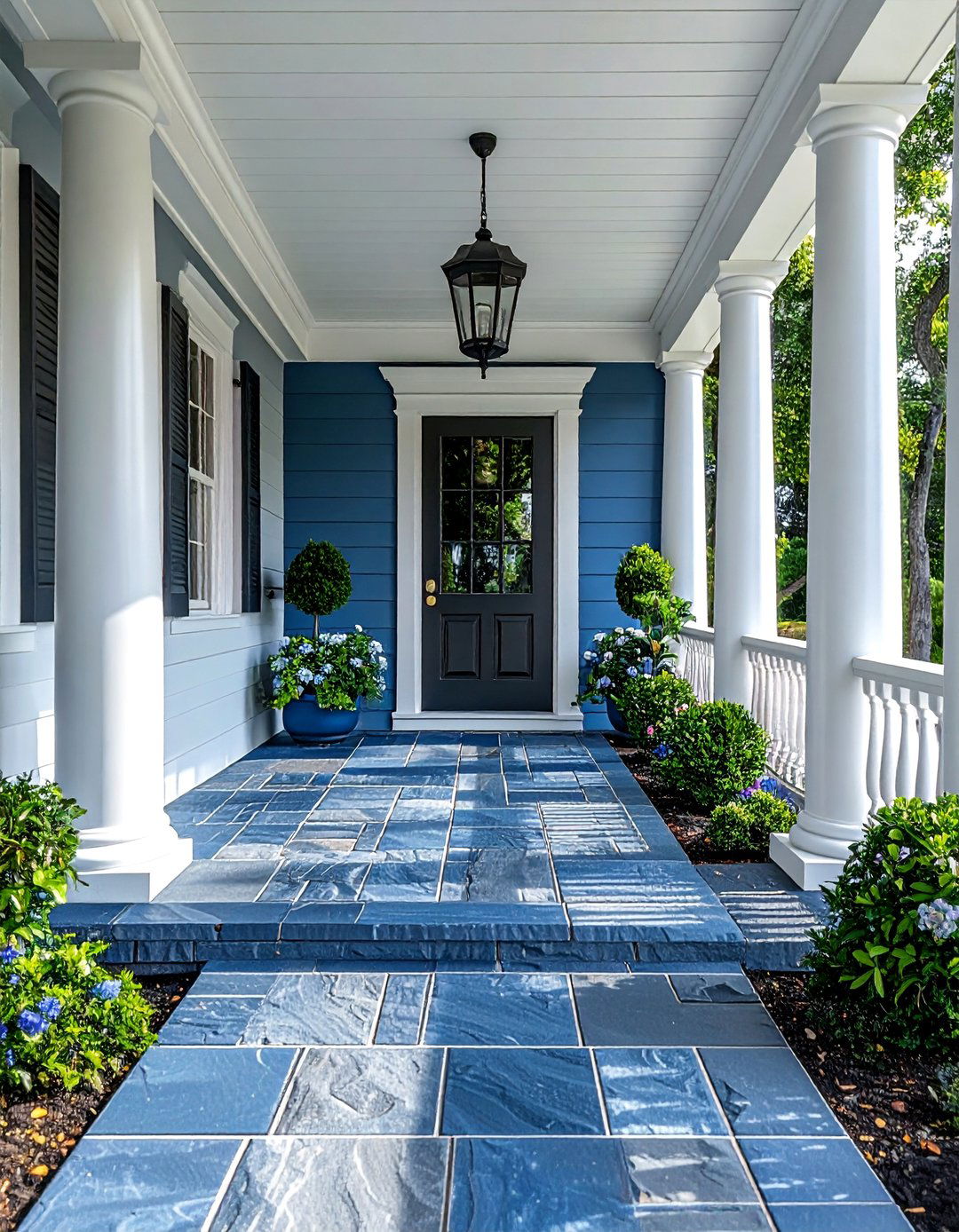
For a durable and sophisticated flooring option, consider installing bluestone pavers on your colonial front porch. This natural stone offers a rich, slate-blue and gray color palette that complements traditional exterior materials like brick and wood. Its slightly textured surface provides excellent slip resistance, making it a safe and practical choice for an outdoor space. Bluestone can be cut into uniform rectangular tiles for a formal, orderly look or laid in a more irregular pattern for a touch of rustic charm. This premium material elevates the entire appearance of the porch, lending it an air of permanence and understated luxury that endures for generations.
12. Intricate Dentil Moulding Trim
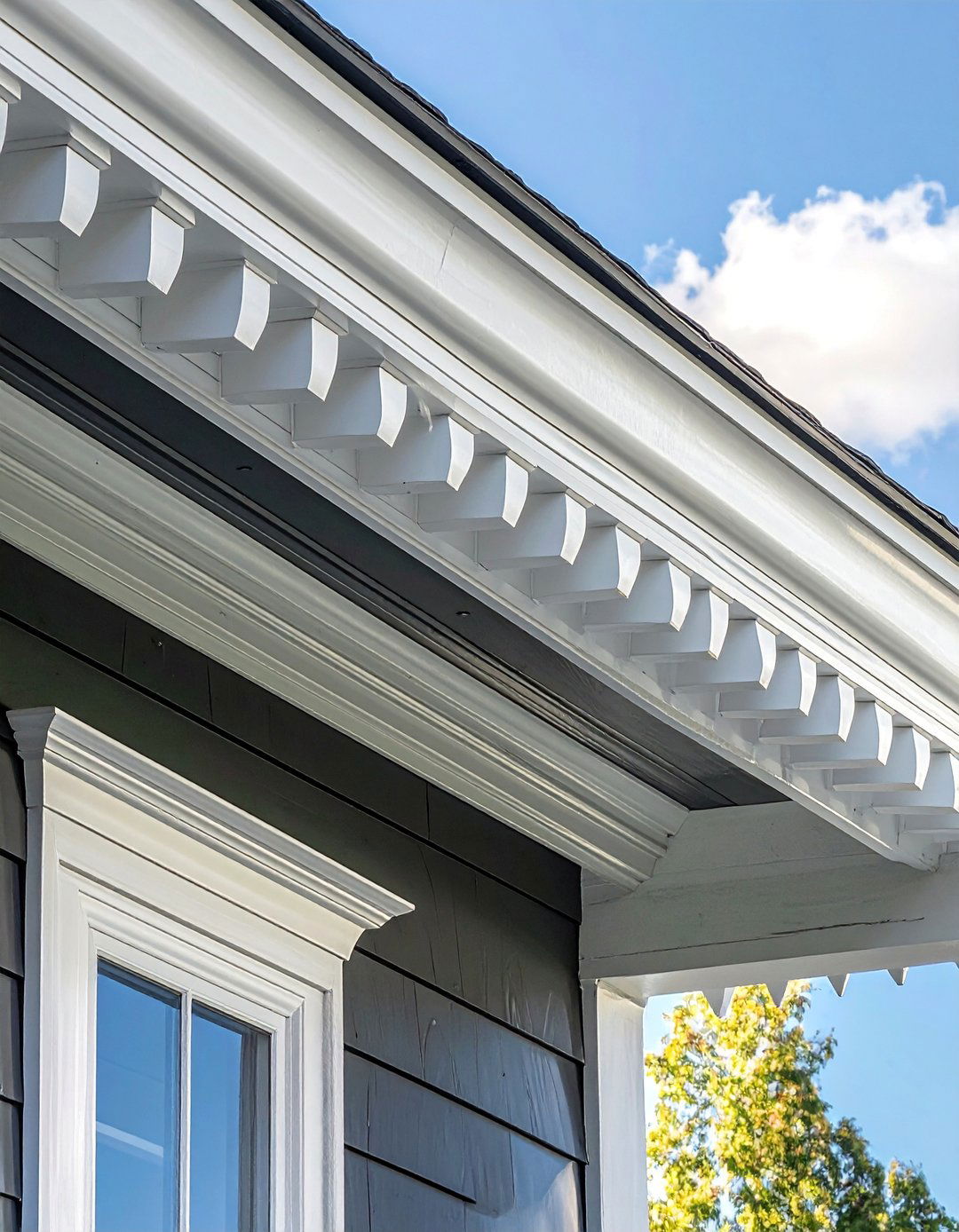
Adding dentil moulding along the roofline of your porch is a subtle yet impactful way to enhance its colonial character. This decorative trim consists of a series of small, evenly spaced rectangular blocks that create a sophisticated, tooth-like pattern. Originating from classical Greek and Roman architecture, dentil moulding was a popular detail in Georgian Colonial homes, signifying wealth and attention to detail. When painted a crisp white to match other trim elements, it adds a layer of textural interest and architectural definition. This refined detail elevates the porch from a simple structure to a beautifully finished architectural statement.
13. A Grand Portico with a Pediment
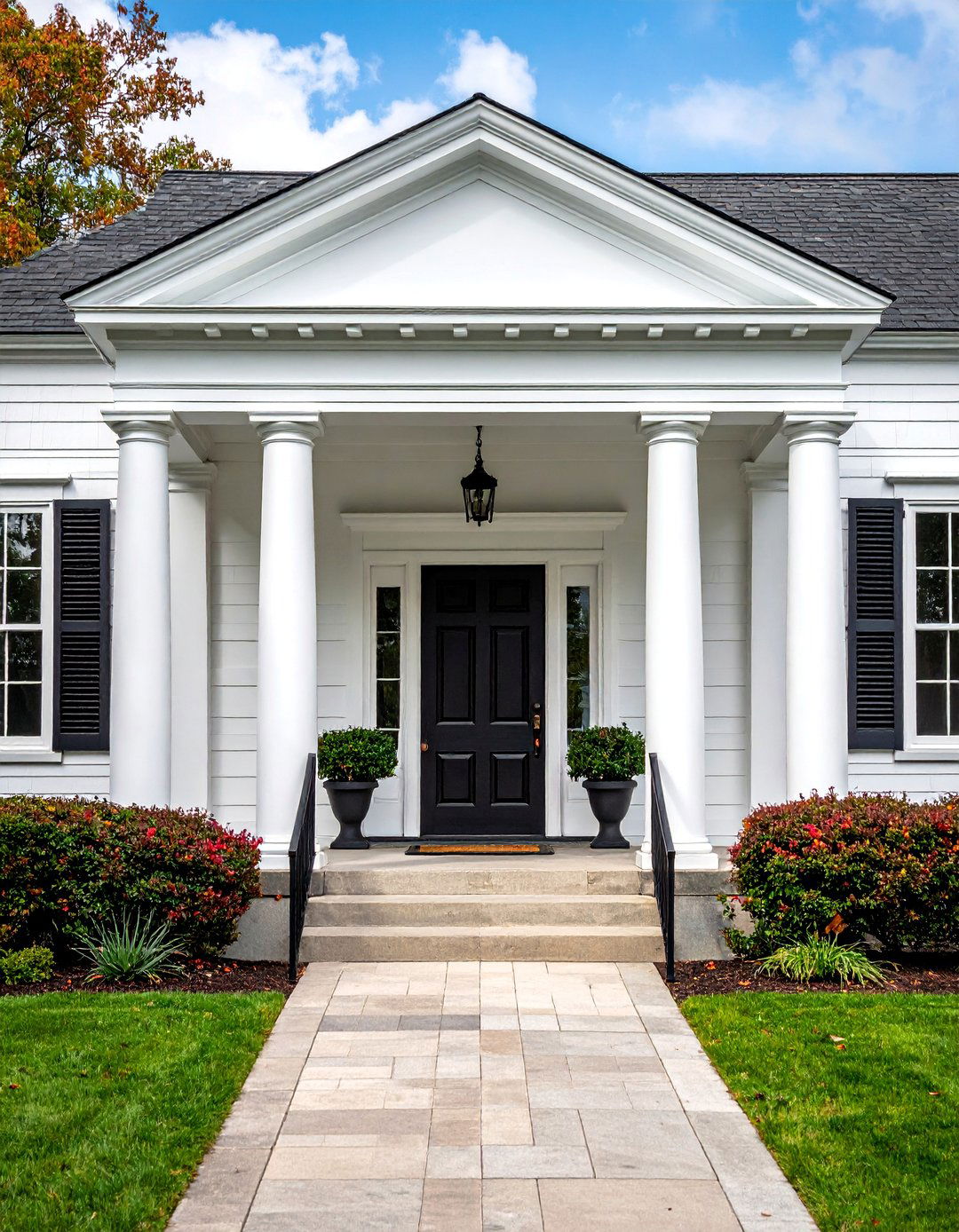
For homes with a more formal, Georgian Colonial influence, a portico with a triangular pediment creates a grand and stately entrance. A portico is a small porch structure supported by columns that frames the front door. Topping it with a pediment—the triangular gable shape—is a direct reference to classical architecture. This design not only provides shelter for guests but also establishes a powerful focal point that emphasizes the home's symmetry and formal design. The pediment can be left simple or adorned with decorative elements like a sunburst or fanlight window, further enhancing the home's elegant and authoritative presence.
14. Decorative Chippendale Porch Railings
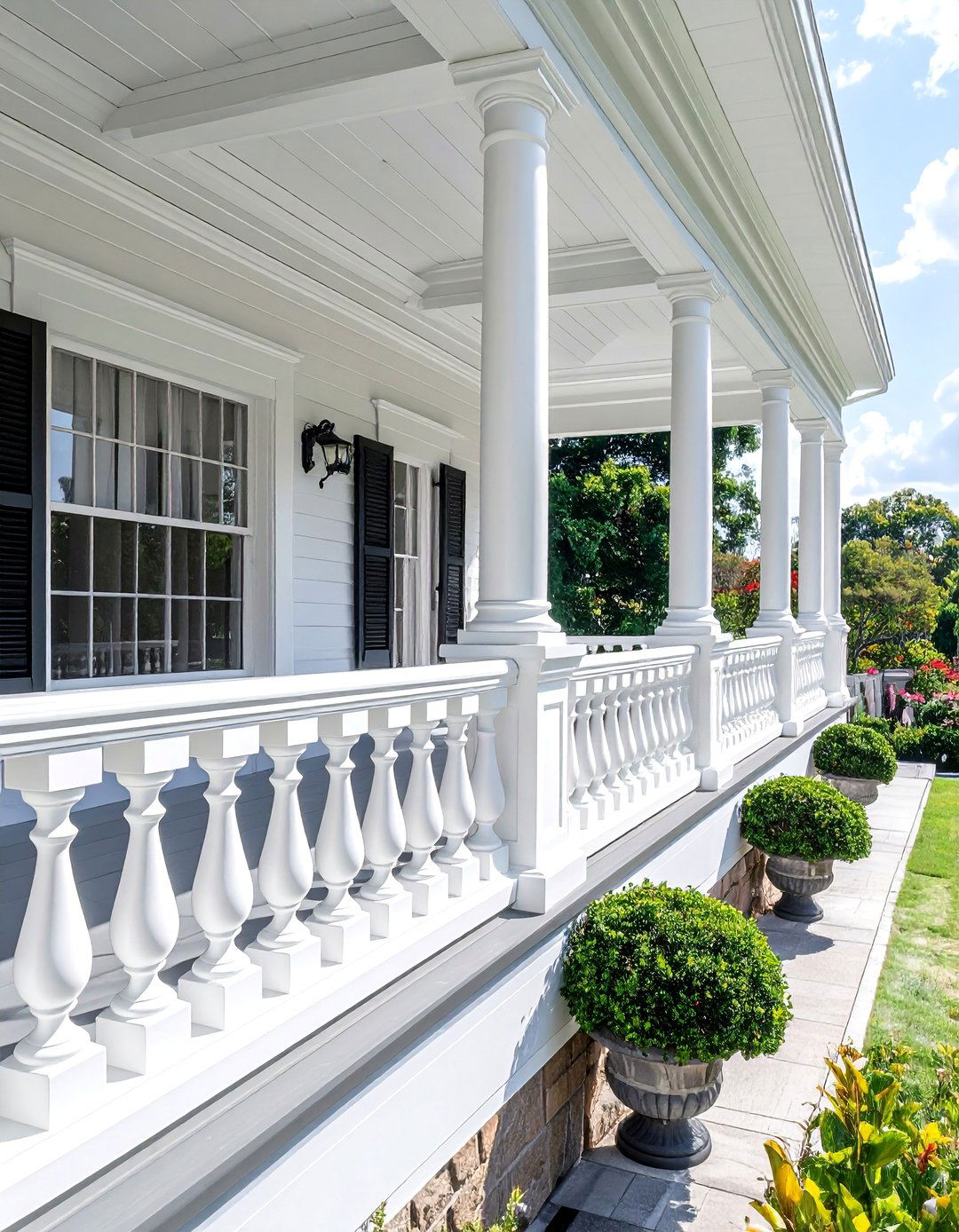
If you wish to introduce a more ornate and decorative element to your colonial porch, Chippendale railings are an excellent choice. Inspired by the fretwork designs of 18th-century furniture maker Thomas Chippendale, these railings feature intricate geometric patterns, such as squares, diamonds, or intersecting lines. This style is most commonly associated with Georgian and other high-style colonial homes. While more decorative than simple straight balusters, Chippendale railings still maintain a sense of order and craftsmanship. Painted a classic white, they add a touch of sophistication and historical flair, turning a simple safety feature into a captivating design element.
15. Welcoming Pineapple Finial Accents
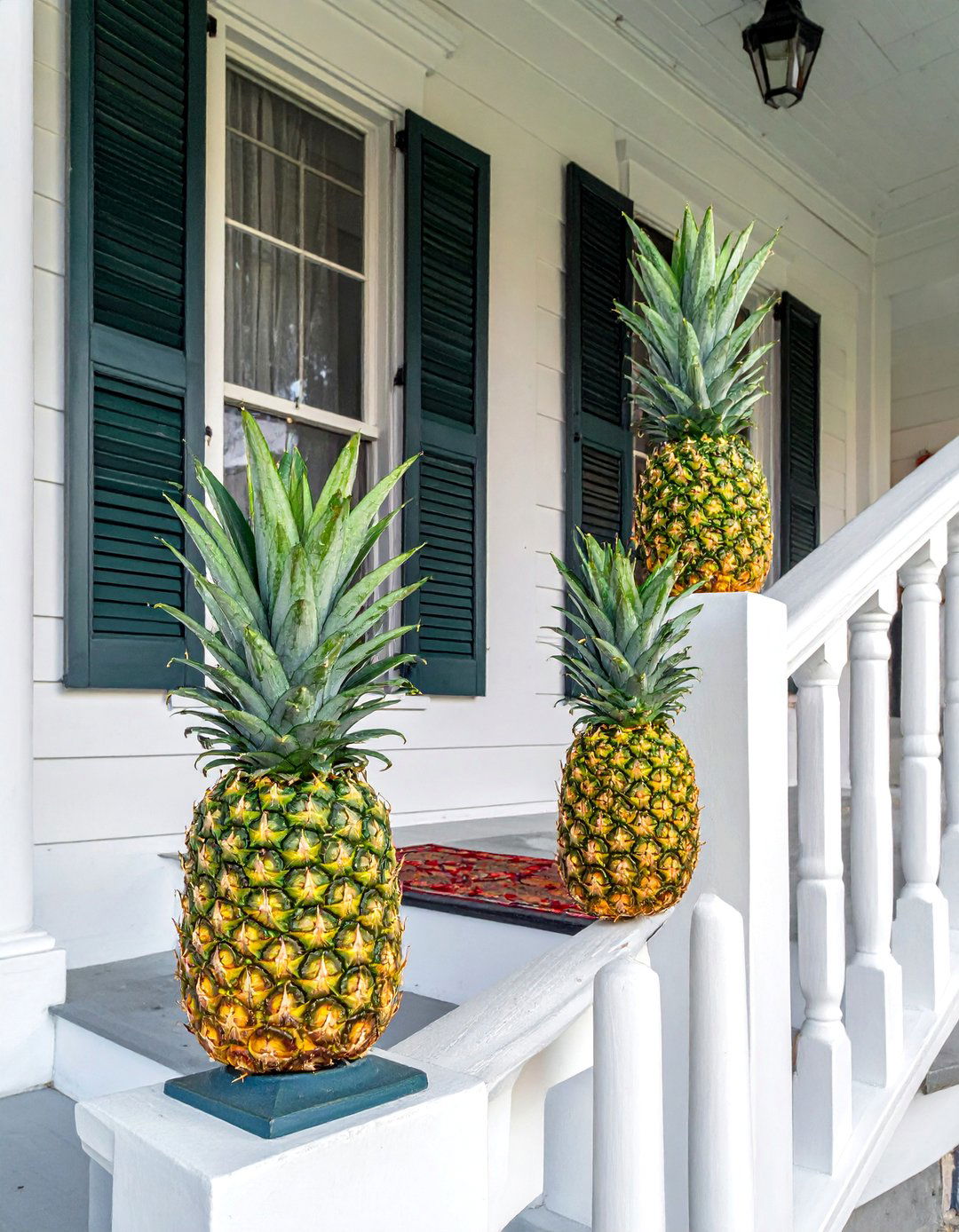
The pineapple has long been a symbol of hospitality and welcome in American culture, making it a perfect accent for a colonial front porch. Incorporate this motif through pineapple-shaped finials on the newel posts of your porch steps or as a design element in a brass door knocker. You could also place small, decorative pineapple statues in symmetrical urn planters. This subtle yet meaningful detail adds a layer of warmth and historical significance to your entryway. It’s a charming nod to a tradition that dates back to the colonial era, when this exotic fruit was a rare and treasured gift for guests.
16. A Classic Wooden Porch Swing
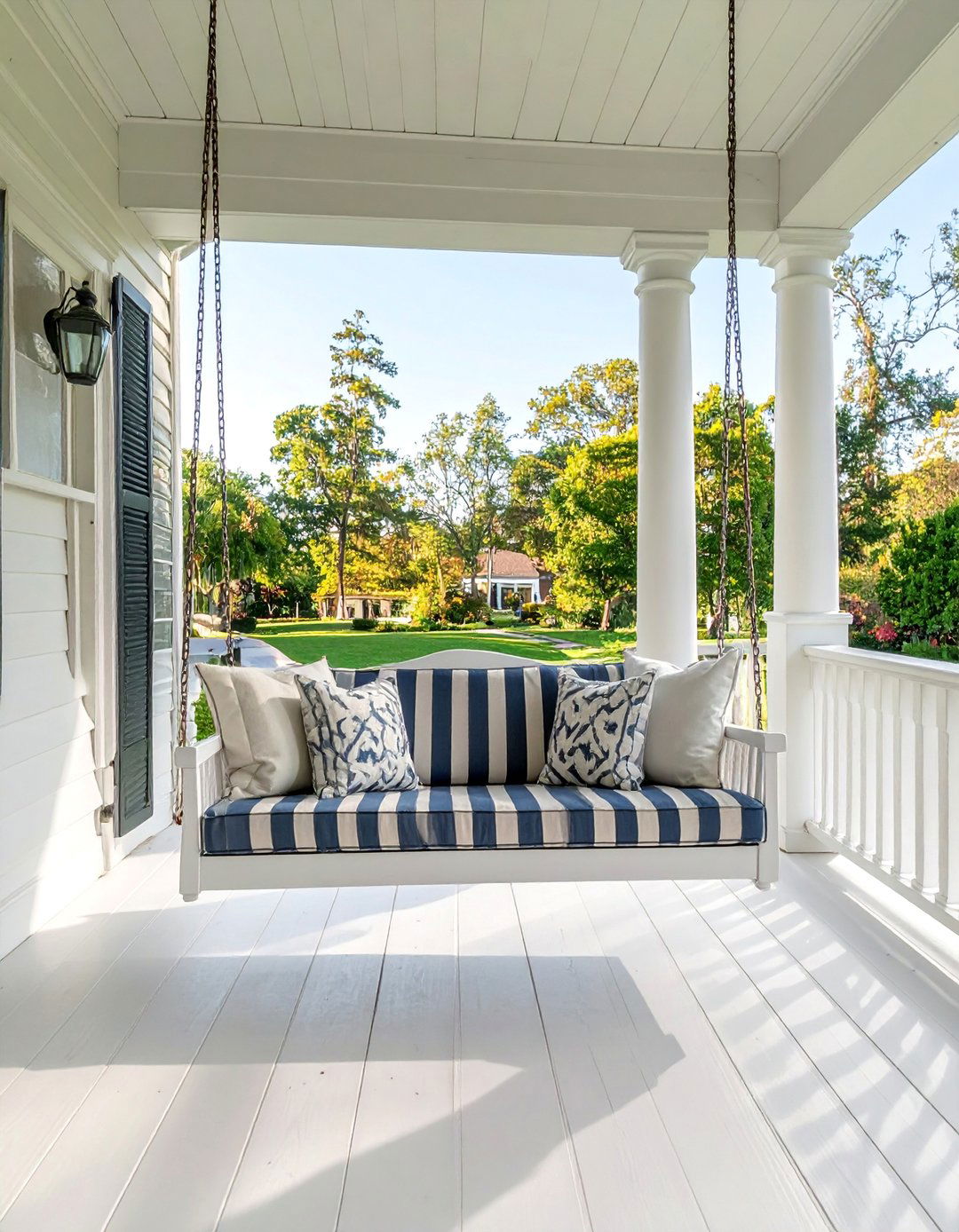
A wooden porch swing offers a charming spot for relaxation and adds a touch of nostalgic comfort to a colonial front porch. Suspend a classic, slat-back swing from the ceiling, positioned to one side to maintain an open pathway to the front door. A swing painted white or a dark color to match your home's trim or shutters will blend seamlessly with the overall aesthetic. Add a comfortable cushion and a few throw pillows in a simple, traditional pattern like stripes or gingham for extra coziness. This feature transforms the porch into an inviting outdoor retreat, perfect for enjoying a quiet afternoon.
17. Formal Urn Planters with Boxwoods
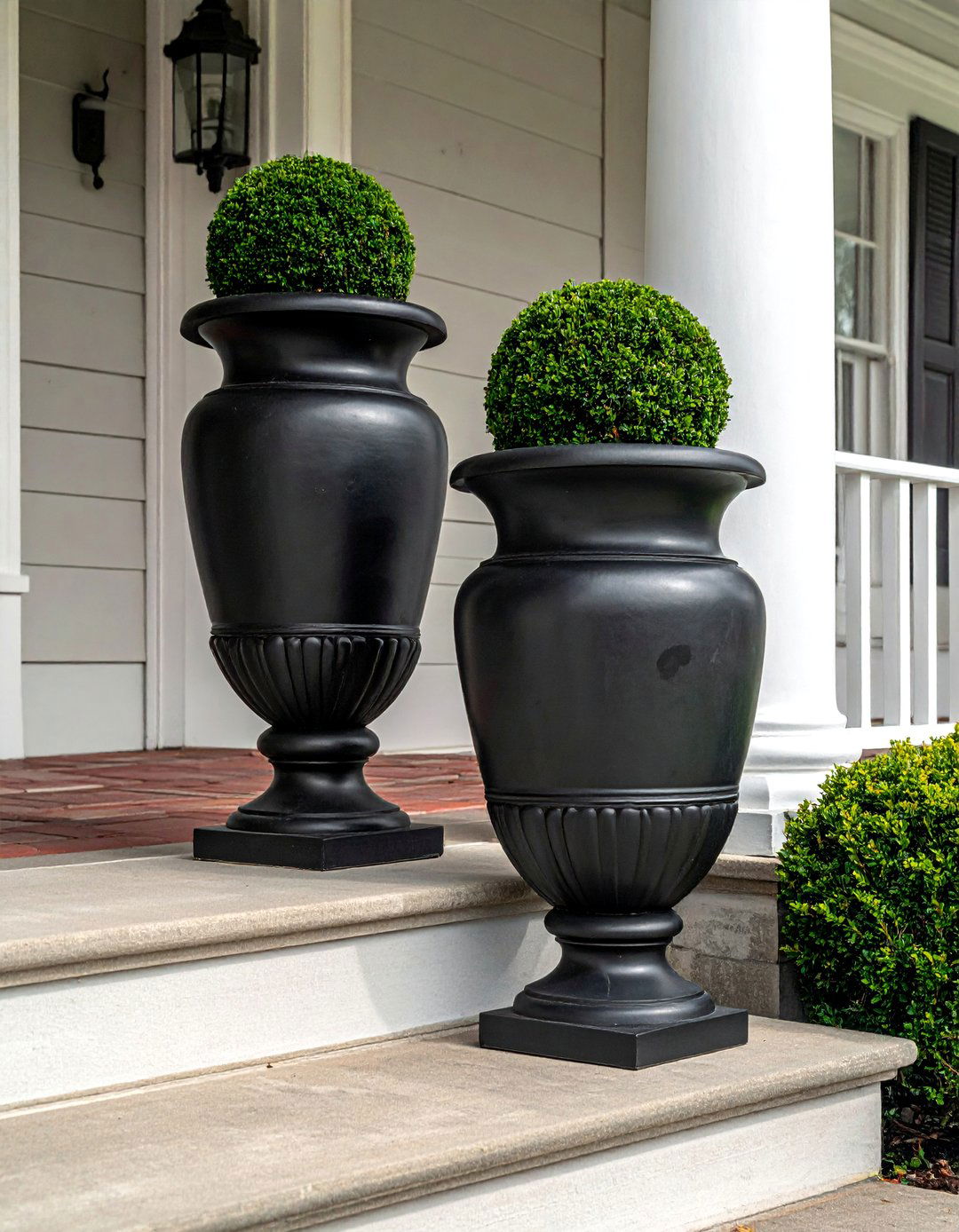
To reinforce the symmetry and formal elegance of a colonial porch, place two large, identical urn planters on either side of the front steps. Classic cast iron or stone-look urns are ideal for achieving an authentic look. Plant them with neatly trimmed boxwood spheres or cones for year-round greenery that requires minimal maintenance. The clean, geometric shapes of the boxwoods complement the structured lines of the colonial architecture. This simple yet sophisticated landscaping choice adds a touch of formal garden style to your entryway, creating a polished and deliberately designed appearance that enhances the home's stately curb appeal.
18. Shutter-Flanked Entryway Windows
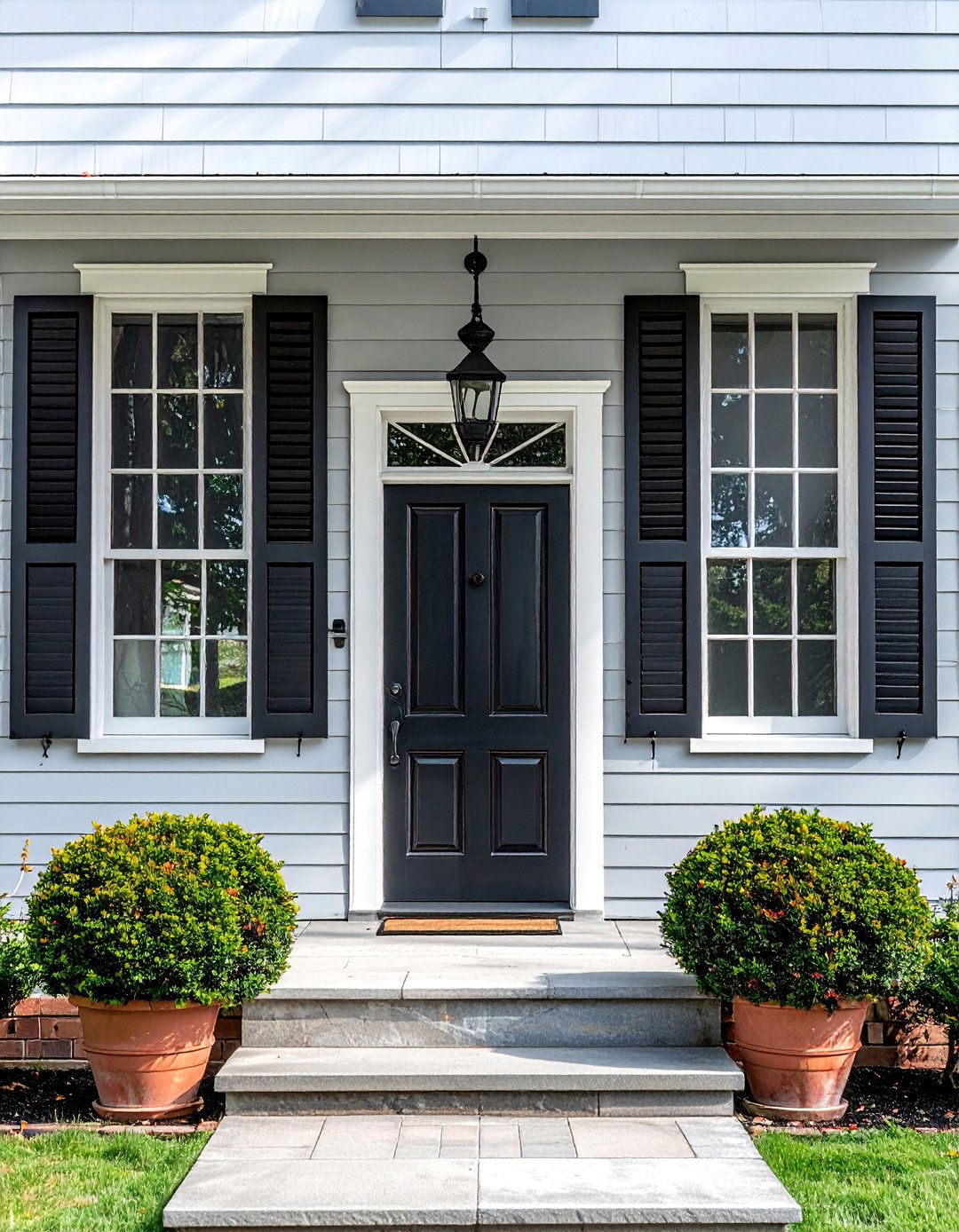
Flanking the windows on or immediately next to your front porch with correctly sized shutters is a quintessential colonial detail. Opt for classic panel-style shutters, which offer a solid, substantial look that feels historically accurate. To ensure authenticity, the shutters should be sized so that, if they were functional, they would fully cover the window when closed. Painting them in a traditional dark color—such as black, navy, or deep forest green—creates a crisp contrast with light-colored siding and white trim. This addition frames the windows, adds depth to the facade, and reinforces the home's symmetrical, layered aesthetic.
19. A Dark Stained Wood Floor
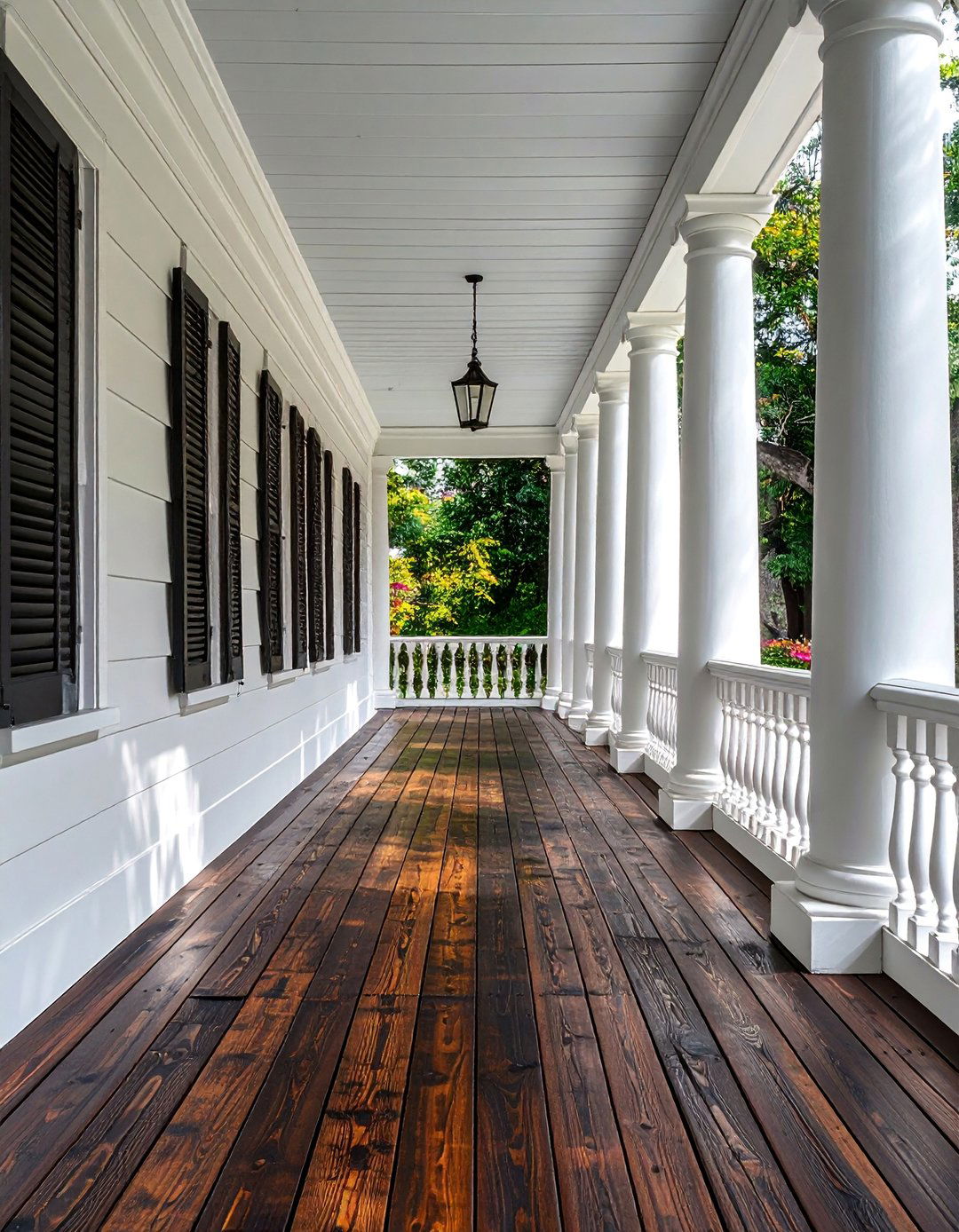
While painted porch floors are common, a dark-stained wood floor offers a rich and sophisticated alternative for a colonial porch. Using a deep, warm stain like walnut or mahogany on traditional tongue-and-groove wood planking creates an elegant foundation for your outdoor space. The dark color beautifully grounds the porch, providing a stunning contrast to white columns, railings, and trim. This finish is also practical, as it can help hide dirt and scuffs better than a light-colored paint. A stained wood floor adds a touch of rustic warmth and timeless quality, enhancing the overall character and curb appeal of your home.
20. Simple Post and Beam Design
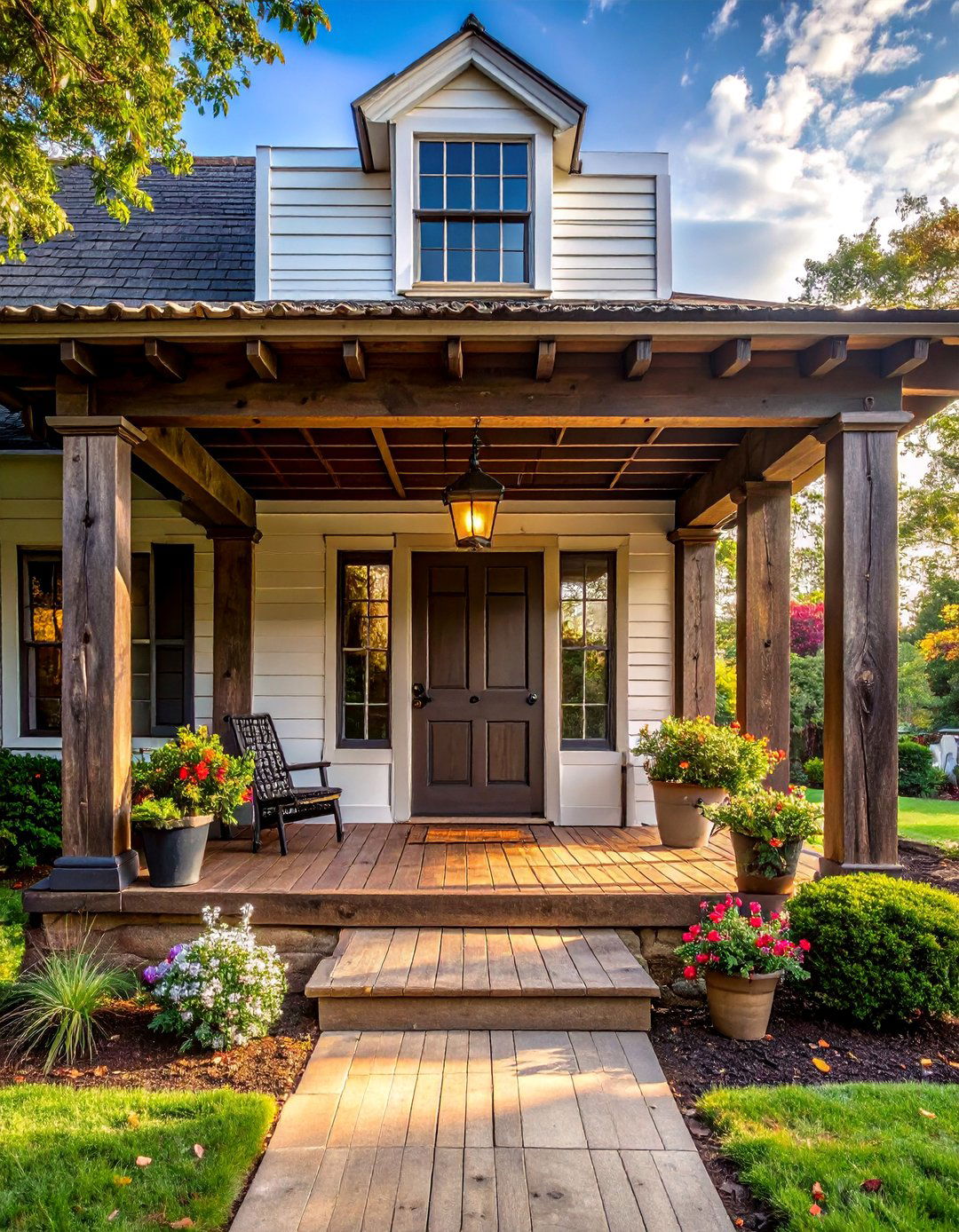
For a more rustic or early-American colonial feel, consider a simple post and beam design for your front porch. This style forgoes ornate columns and intricate railings in favor of straightforward, sturdy wooden posts and exposed overhead beams. The beauty of this approach lies in its unadorned simplicity and honest craftsmanship. Using natural or darkly stained wood emphasizes the material's texture and strength. This minimalist design provides shelter and defines the entryway without overwhelming the facade, making it an excellent choice for smaller colonial homes or those with a more vernacular, farmhouse-inspired aesthetic that values function and authenticity above all.
21. Gambrel Roof Overhang Porch
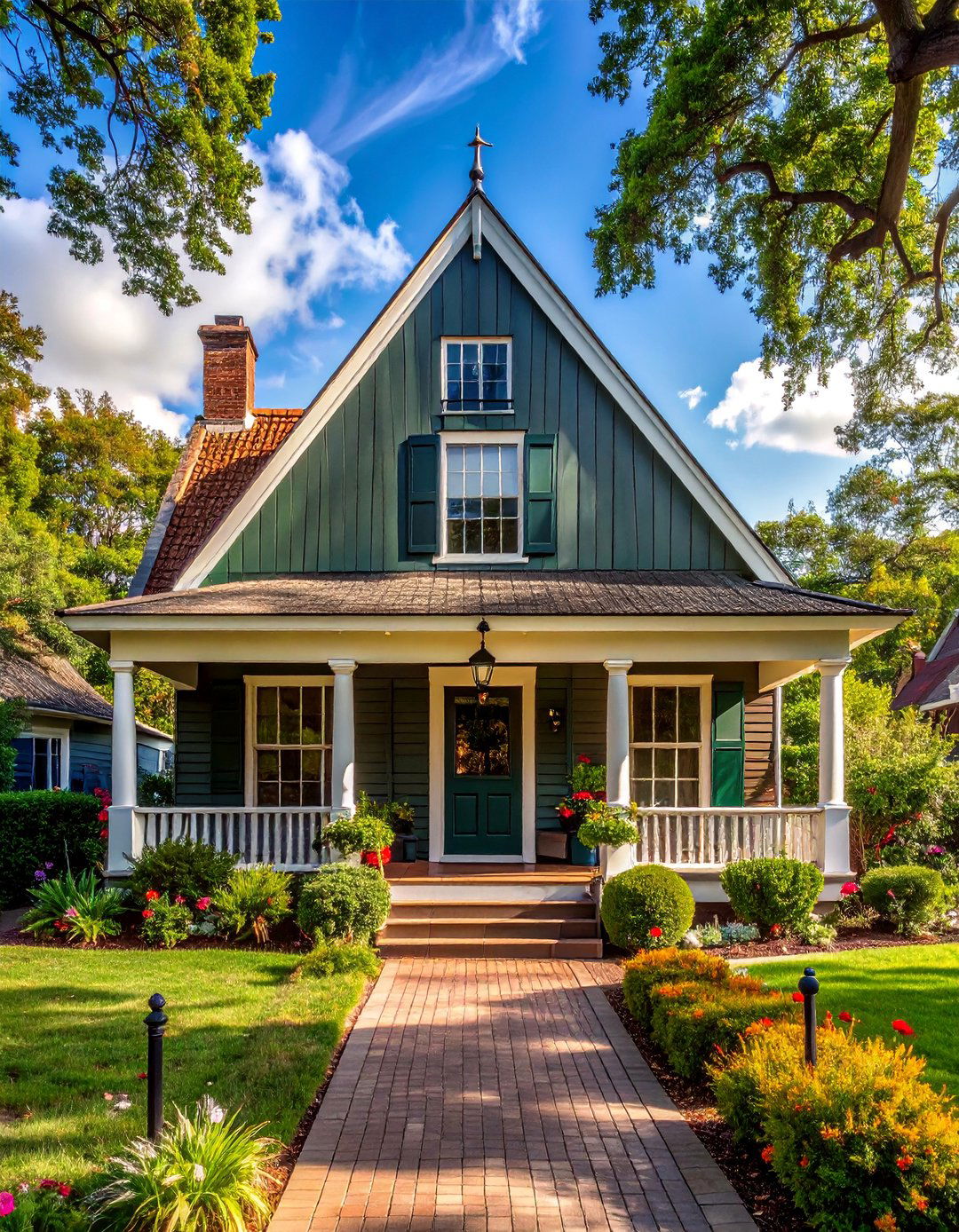
A gambrel roof, with its distinct two-sided, double-sloped design, is a hallmark of Dutch Colonial architecture. Extending this roofline to create a covered front porch is a seamless way to integrate the structure into the home’s overall design. This creates a charming and cozy entryway that feels like a natural extension of the house itself. The deep overhang provides ample protection from the elements, making the porch a highly functional space. Often supported by simple wooden posts, a gambrel roof porch has a slightly more rustic and informal feel, perfect for creating a warm and welcoming first impression.
22. Graceful Arched Portico Entrance
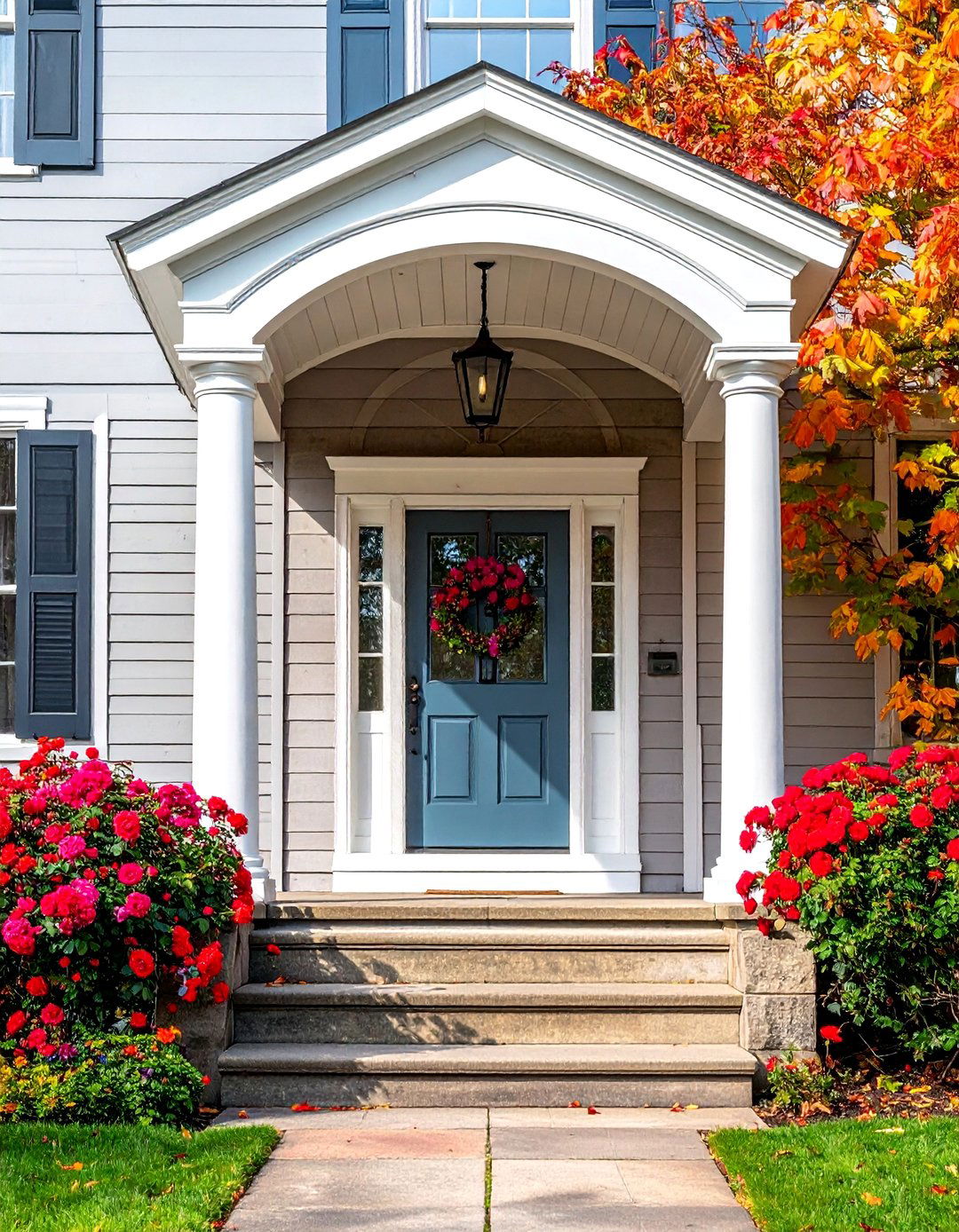
Introduce a touch of Federal-style elegance to your colonial home with an arched portico entrance. Unlike the triangular pediment of a Georgian portico, this design features a gracefully curved or arched roofline above the front door. This softer, more refined silhouette adds a unique architectural flourish that stands out. The arch can be supported by slender, classic columns, and the interior of the arch can be finished with decorative trim or beadboard. This choice adds a sense of sophistication and lightness to the facade, creating a memorable and distinguished entryway that subtly elevates the home’s colonial-inspired design.
23. Understated Wrought Iron Railing

While wood is the most common material for colonial porch railings, wrought iron can be an elegant and durable alternative, especially for homes with brick exteriors or a slight Georgian influence. Opt for a simple, classic design with straight, slender balusters and a minimalist top rail. Avoid overly ornate scrolls or intricate patterns to maintain the clean lines of the colonial style. A black wrought iron railing provides a crisp, graphic contrast against a white porch structure or red brick steps. It offers a sense of permanence and refinement while being low-maintenance, providing security without appearing heavy or obstructive.
24. A Solid Red Brick Porch Base

Constructing the base of your front porch with solid red brick creates a strong, foundational look that anchors the home to the ground. A raised porch with a brick skirt or foundation walls adds visual weight and historical authenticity. This technique is especially effective on homes with brick chimneys or other brick accents, creating a cohesive material palette. The warm, earthy tones and classic texture of the brick provide a beautiful contrast to crisp white wooden columns and railings that rise above it. This sturdy and timeless design choice enhances curb appeal and speaks to the enduring quality of colonial building practices.
25. A Layered Doormat Welcome
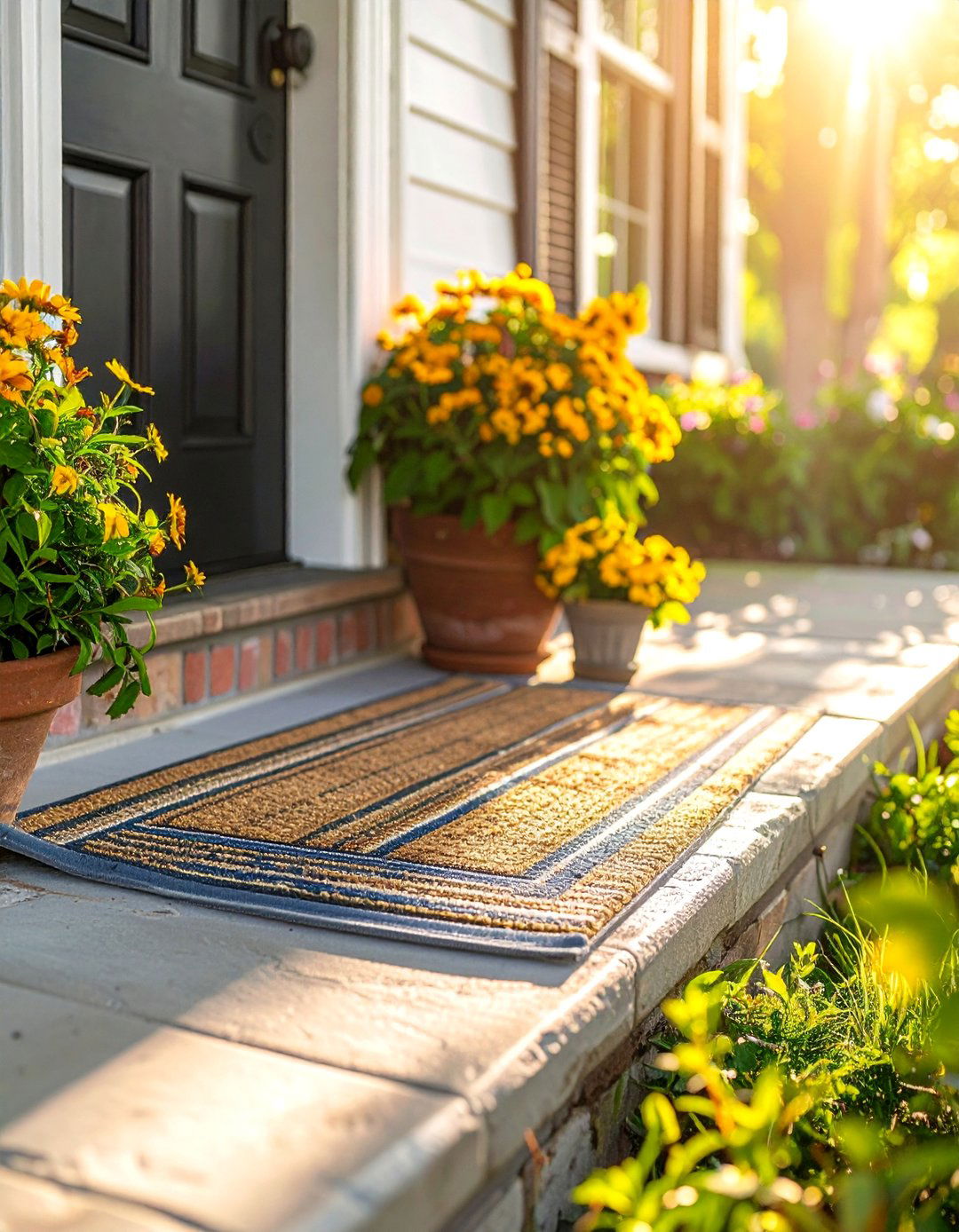
A simple yet stylish way to enhance your colonial porch entryway is with a layered doormat. This look involves placing a larger, patterned outdoor rug—such as one with classic stripes, checks, or a simple geometric design—underneath a smaller, standard-sized coir doormat. This layering technique adds texture, color, and a sense of deliberate design to your doorstep. Choose colors that complement your front door and siding for a cohesive look. It’s a small detail that makes a big impact, creating a warm and inviting welcome for guests while also being highly functional for trapping dirt before it enters your home.
26. Classic Overhead Pendant Lighting
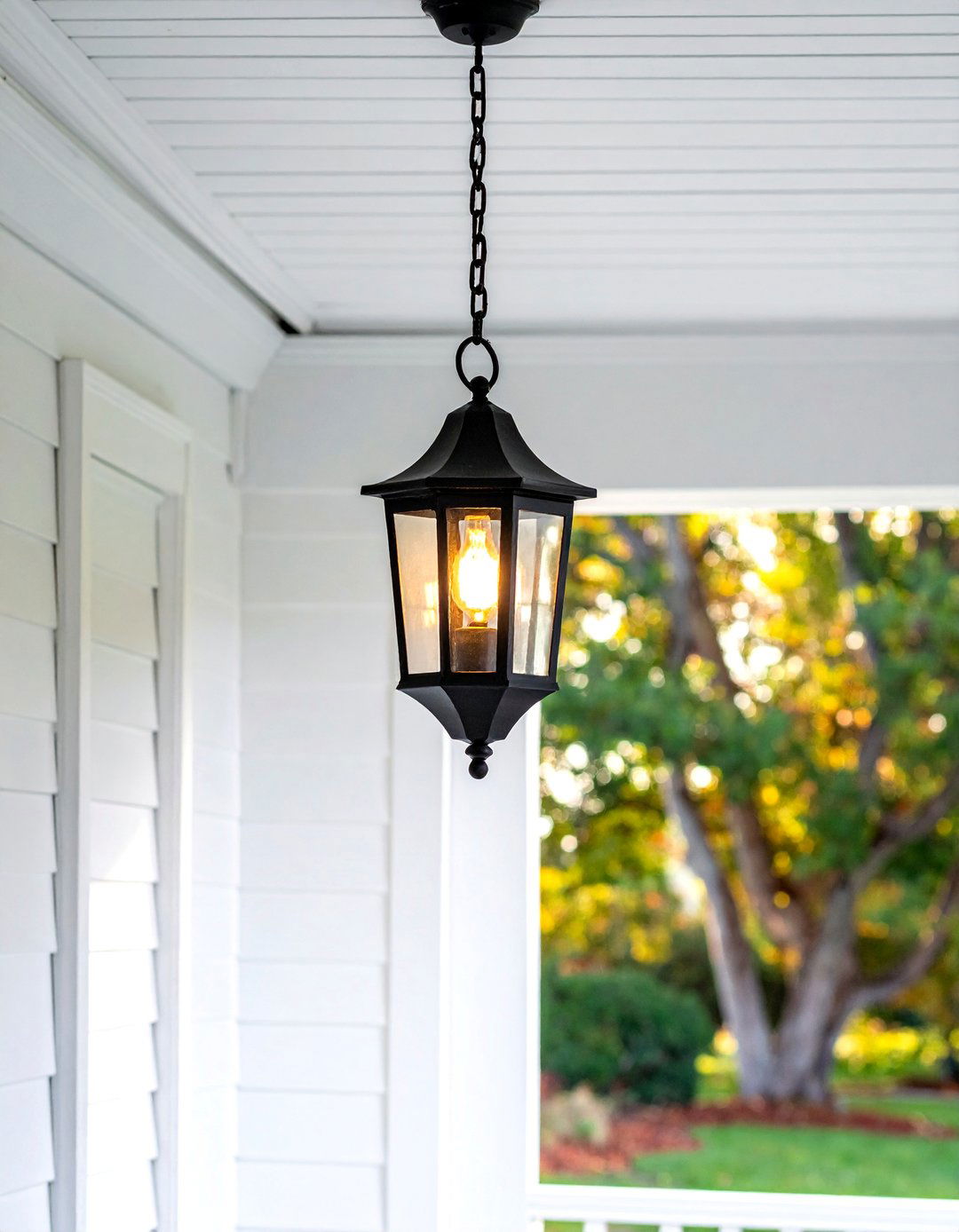
In addition to wall sconces, a classic overhead pendant light can serve as a beautiful centerpiece for a colonial front porch. Suspend a single, lantern-style pendant directly in the center of the porch ceiling, aligned with the front door to maintain symmetry. Choose a fixture made from materials like black iron, aged brass, or copper with clear glass panes to complement the home's historic aesthetic. This central light source provides ample illumination for the entire space and acts as a decorative focal point. It adds a touch of elegance and draws the eye upward, highlighting details like a beadboard ceiling.
27. Integrated Bench Seating
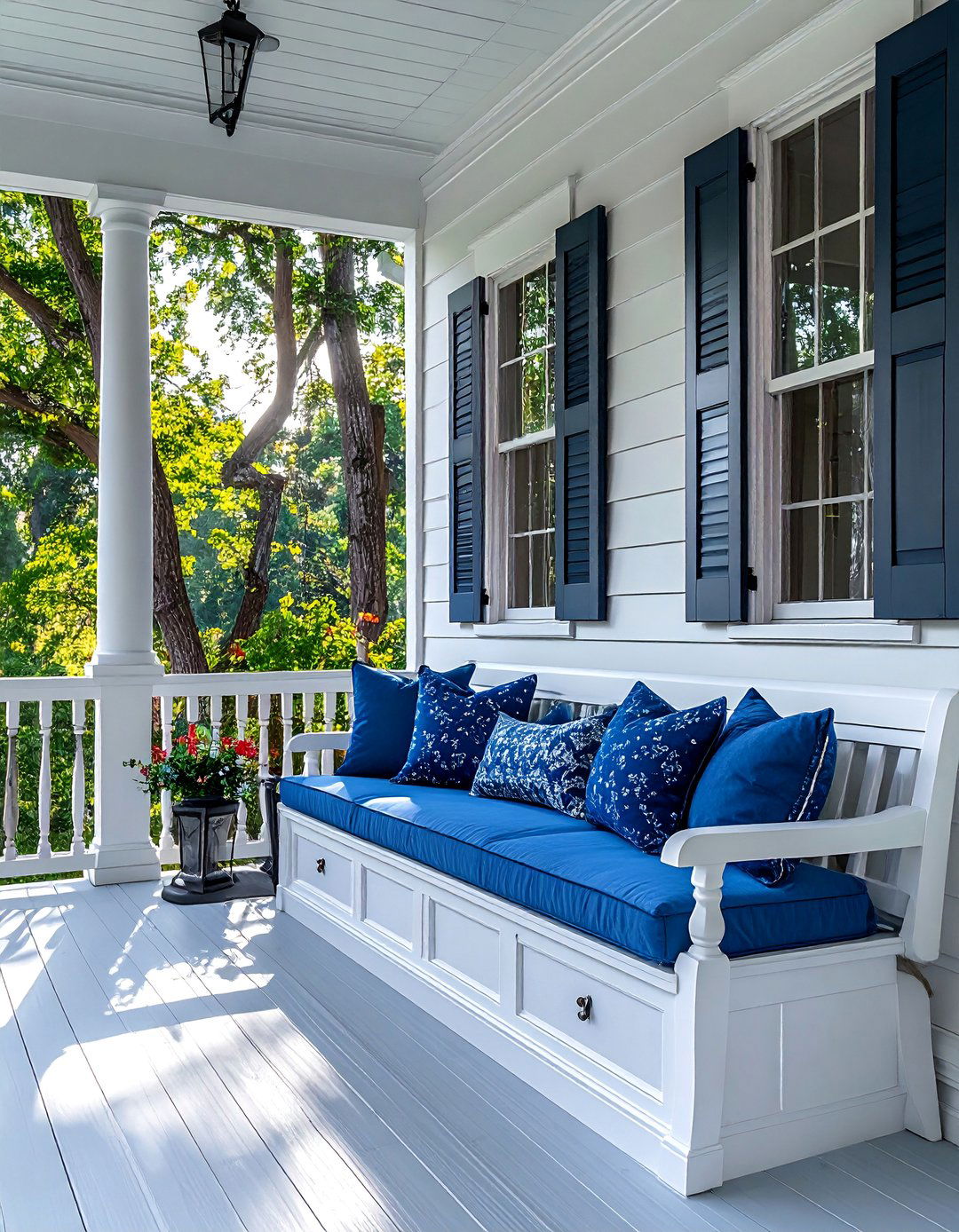
For a seamless and functional design, consider incorporating built-in bench seating into your colonial front porch. These benches can be integrated directly into the porch railing or built against a solid wall of the house. Painting them the same color as the porch trim—typically white—ensures they blend perfectly with the architecture, creating a clean, uncluttered look. This provides permanent, weather-resistant seating without the need for extra furniture, maximizing floor space. Add outdoor cushions in a simple, traditional fabric for comfort. Integrated benches offer a practical and charming spot for sitting while reinforcing the porch's role as an outdoor room.
28. Manicured Foundation Planting

Thoughtful landscaping around the base of a colonial front porch is crucial for completing the look. Opt for structured, manicured foundation plantings that mirror the home’s symmetry and order. Low, clipped hedges of boxwood or yew create a clean, green border along the front of the porch. You can also add symmetrically placed flowering shrubs like hydrangeas or roses for a touch of seasonal color. The key is to keep the plantings neat and tidy to complement, not overwhelm, the architecture. This formal approach to landscaping connects the house to its surroundings and enhances its stately, well-maintained appearance.
29. Flagstone Walkway and Porch Floor
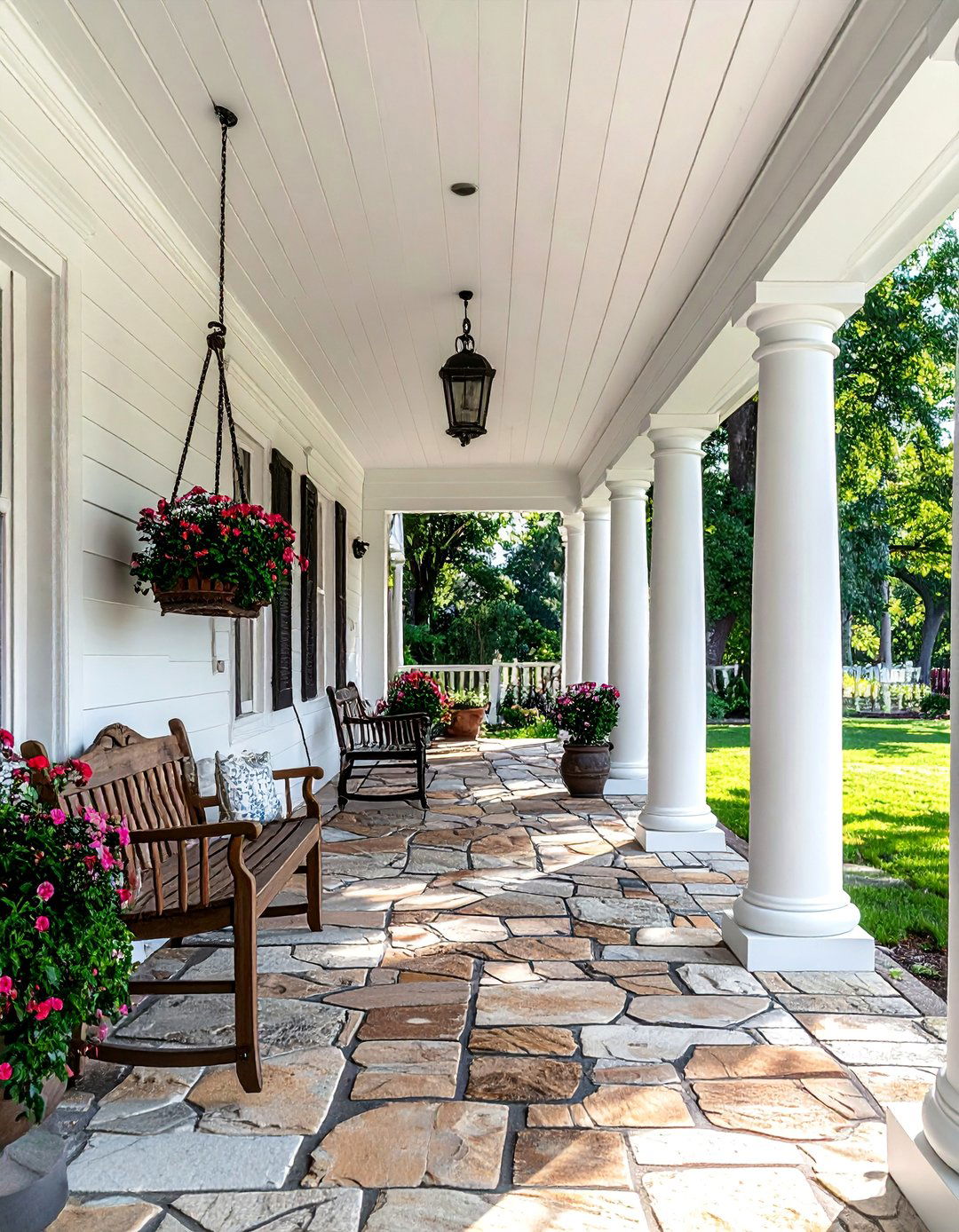
Using natural flagstone for your front walkway and continuing it onto the porch floor creates a seamless and organic transition from the landscape to your home. Flagstone, with its irregular shapes and earthy tones of gray, blue, and tan, offers a slightly more rustic and informal look than uniform brick or bluestone. This material adds wonderful texture and natural beauty that complements the simple elegance of colonial design. The durable, non-slip surface is ideal for high-traffic areas. A flagstone porch floor pairs beautifully with classic white columns and railings, balancing formal architecture with a touch of natural, unrefined charm.
30. A Bold and Welcoming Red Front Door
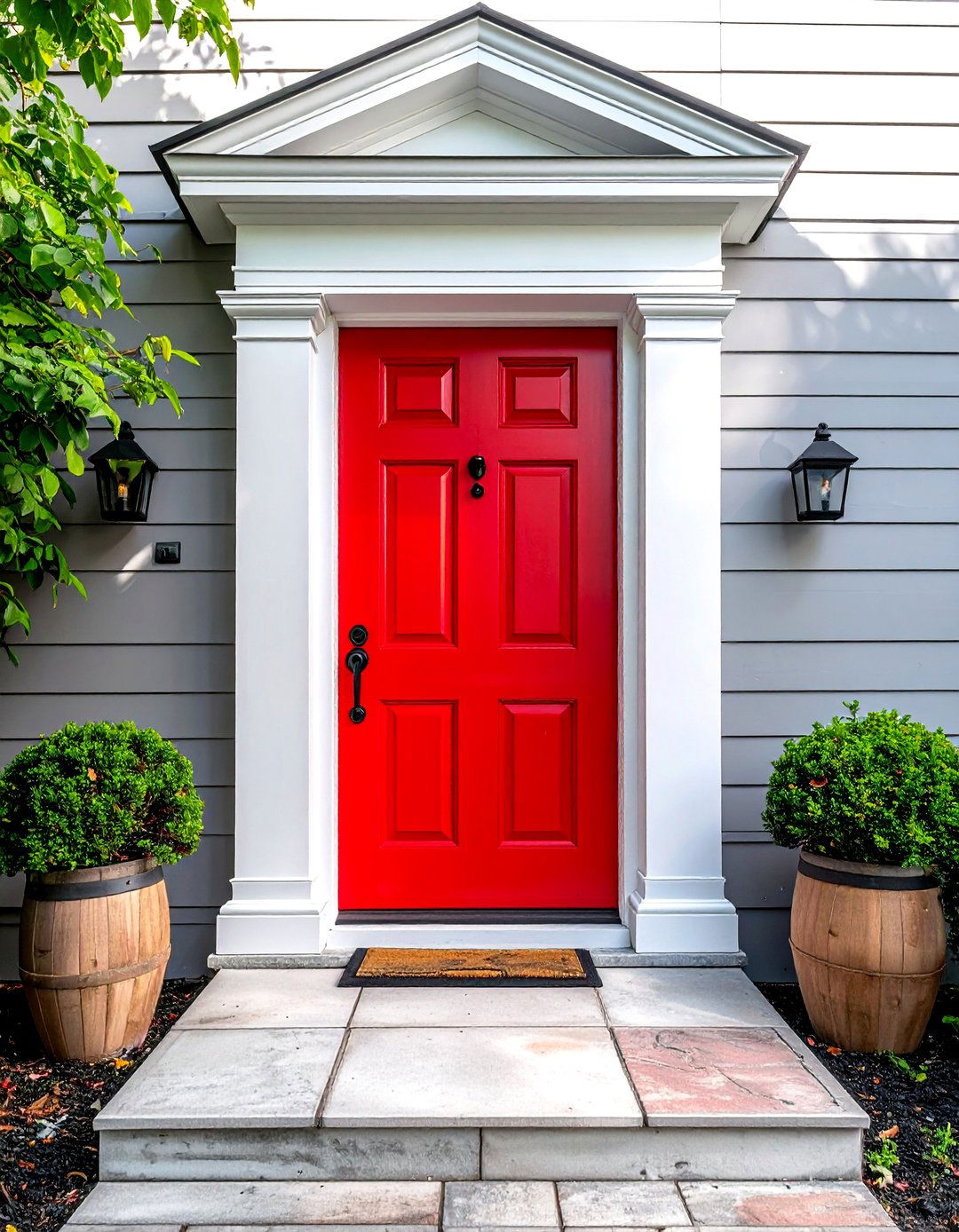
A vibrant red front door is a timeless and popular choice for colonial homes, offering a bold splash of color that exudes warmth and energy. Historically, a red door symbolized a safe and welcoming place for travelers. This classic hue stands out beautifully against neutral siding and crisp white trim, creating a cheerful and confident focal point. Choose a deep, historic red for a traditional look or a brighter, more contemporary shade for a modern twist. Paired with polished brass or black hardware, a red door adds personality and charm, making a memorable first impression that is both historically rooted and full of life.
Conclusion:
Ultimately, the charm of a colonial front porch lies in its elegant simplicity and adherence to symmetry. By focusing on classic elements like balanced columns, traditional materials such as brick and wood, and a refined color palette, you can create an entryway that is both historically authentic and deeply welcoming. Whether you opt for simple post-and-beam construction or a grand portico with a pediment, the key is to honor the architectural principles of order and grace. These ideas provide a blueprint for enhancing your home’s curb appeal, crafting a space that is not just a passageway but a true extension of your home.

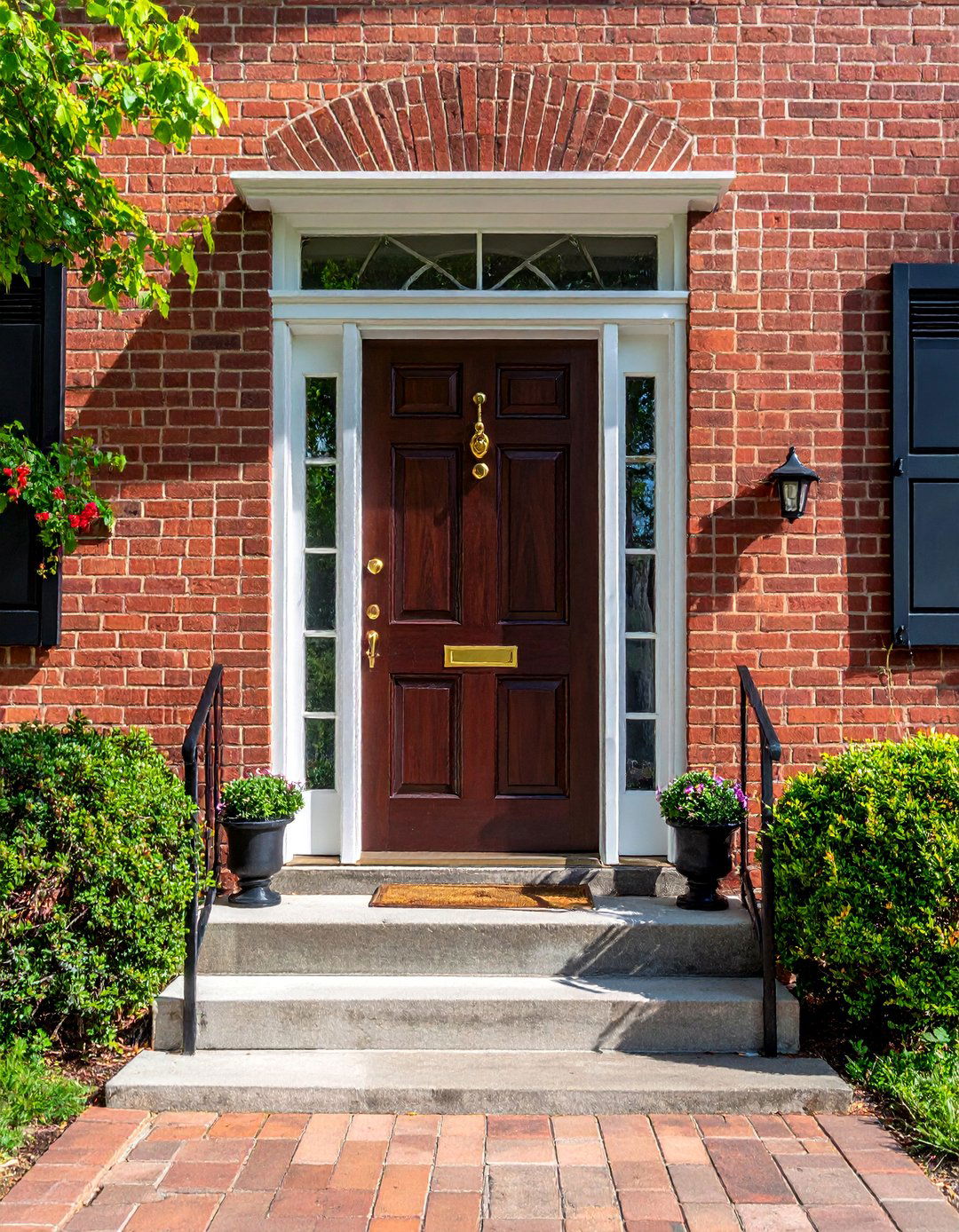
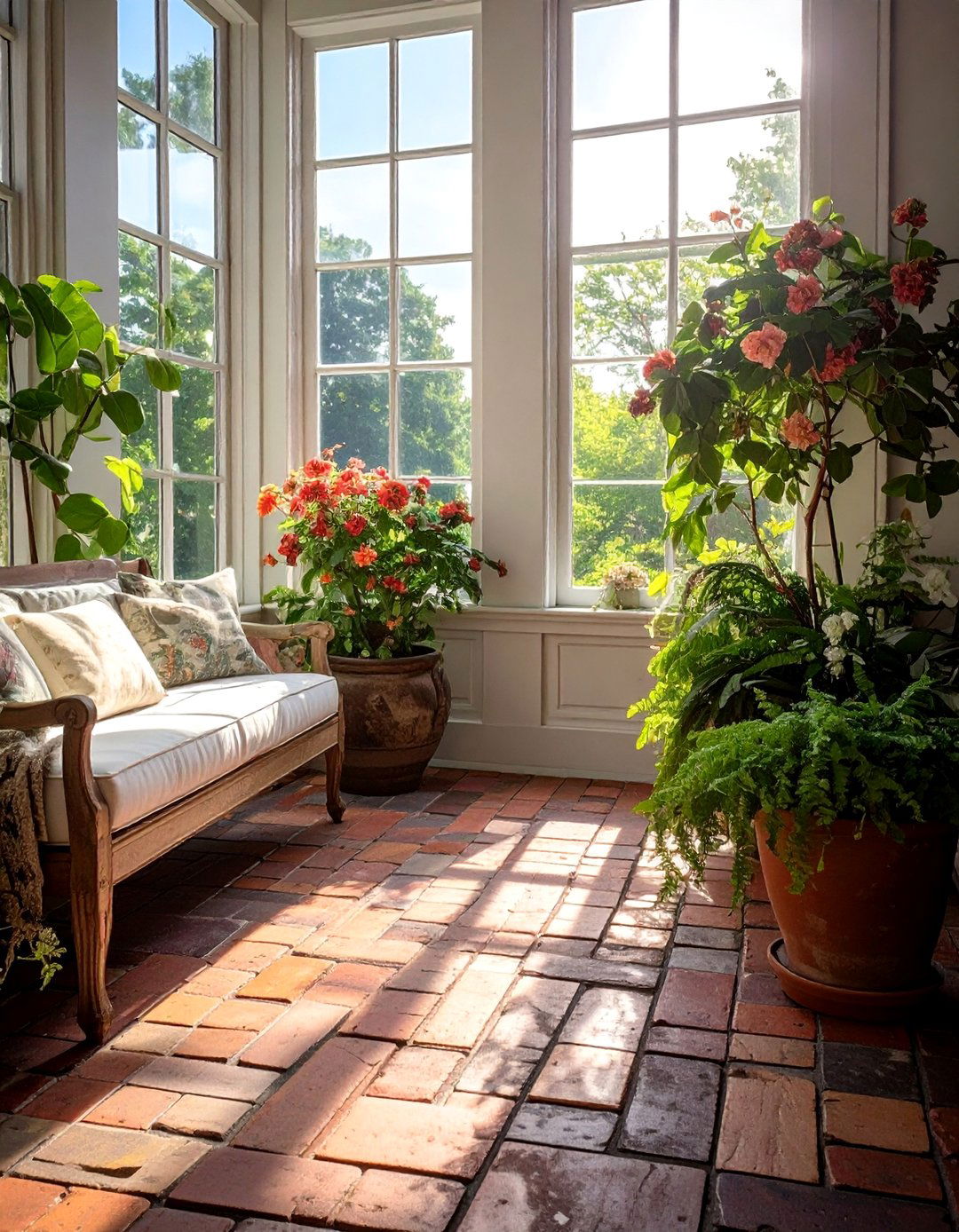


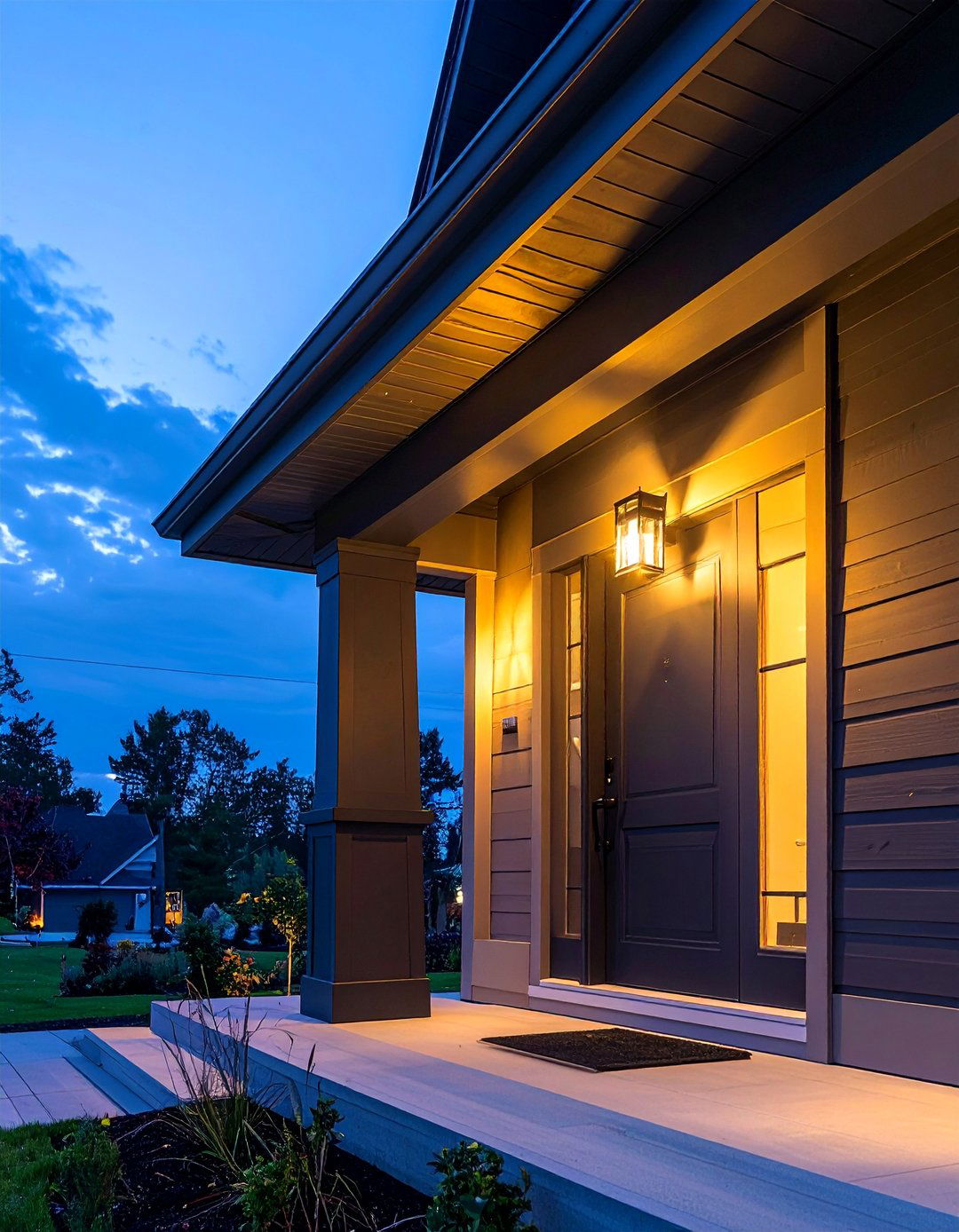
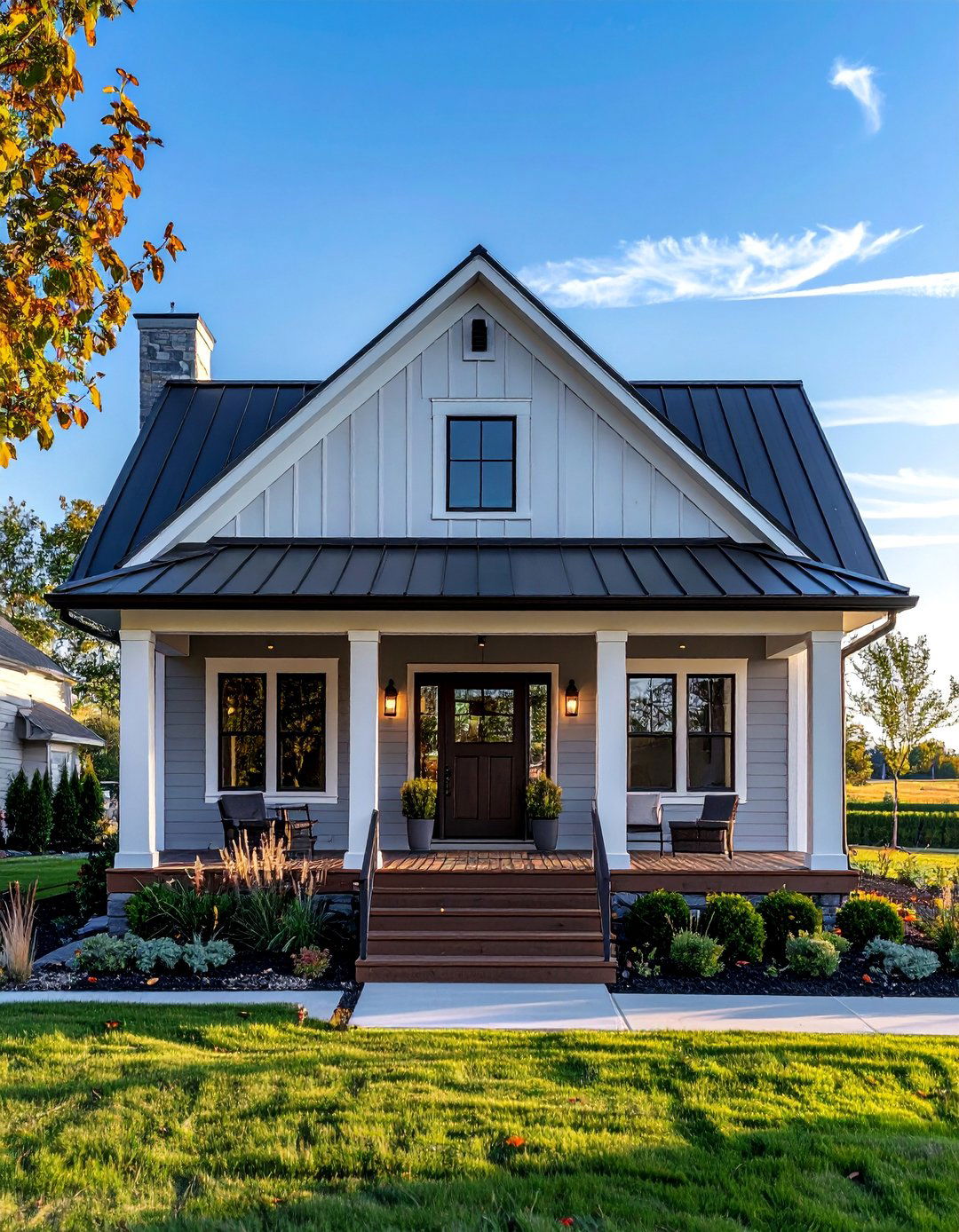

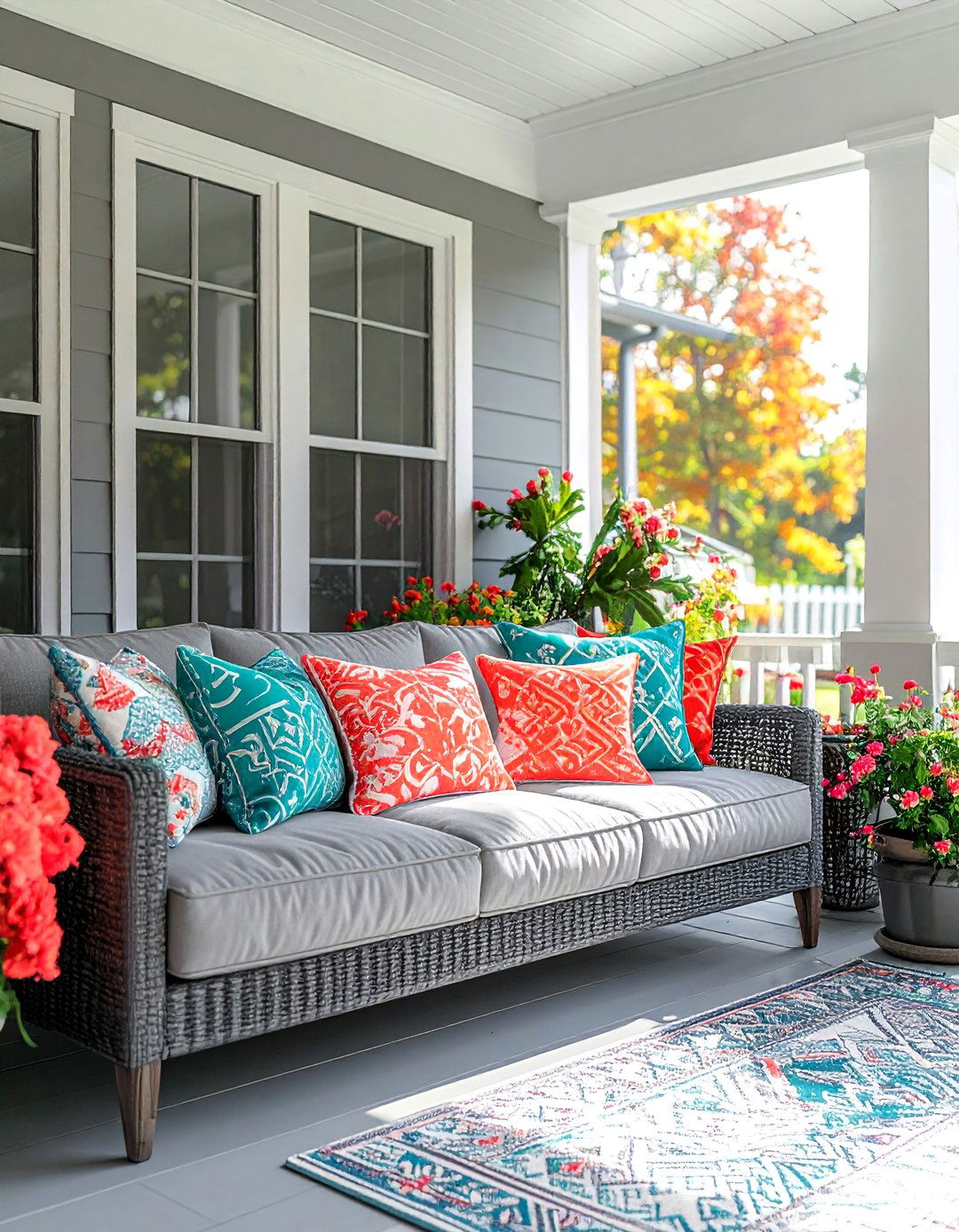
Leave a Reply